




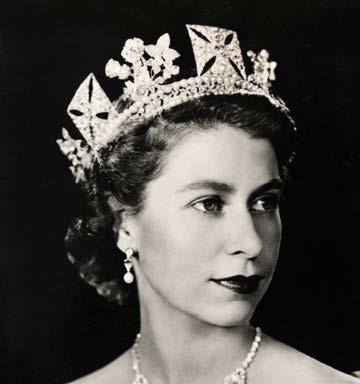
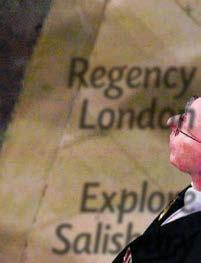









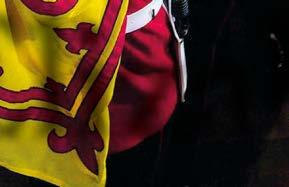


BRITAIN HISTORY HERITAGE TRAVEL CULTURE + Regency London Explore Salisbury Britain's ghost towns WIN a stay in beautiful Royal Deeside PAGEANTRY & MAJESTY Ancient traditions BELOVED BALMORAL Highland haven ROYAL VERSES Poets Laureate through the ages Final farewell Queen Elizabeth II www.britain-magazine.comNOV/DEC 2022 £4.95 THE OFFICIAL MAGAZINE FIND YOUR

As the nation enters a new, post-Elizabethan era, this issue we remember our late Queen’s life and remarkable reign. We visit Balmoral in Royal Deeside, where she spent her happiest times, and where her 70-year reign ended (Highland haven, p16); we explore the post of Poet Laureate, writer of verses for the monarch at times of national signi cance (Royal rhymes, p41); and following the Queen’s magni cent funeral, we delve into the traditions involved in state funerals, and reveal how the pomp and ceremony has evolved over the centuries (Pageantry & majesty, p56)

Elsewhere this issue, we step back in time to Regency London (p27), the backdrop to much of the romance and scandal of the era, and uncover the stories behind Britain’s abandoned stately homes and villages (Lost property, p34). And as ever, we travel to some of the country’s most scenic spots – including the beautiful cathedral city of Salisbury (City guide, p75) and the timeless Test Valley in Hampshire (Passing the Test, p66) Enjoy the issue!
CONTENTS







VOLUME 90 ISSUE 6
FEATURES



14 IN MEMORY OF QUEEN ELIZABETH II

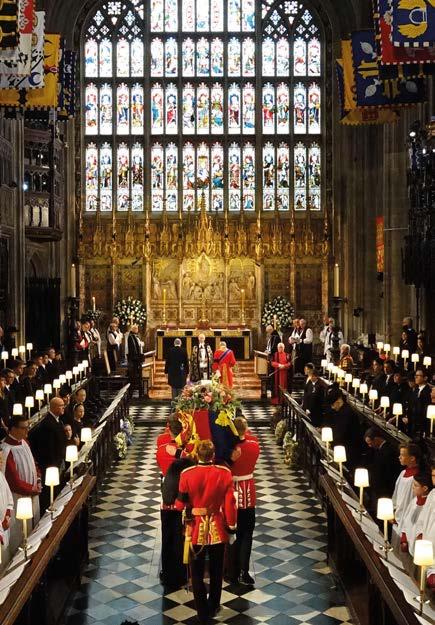 Natasha Foges Editor
Natasha Foges Editor



As the nation mourns the Queen’s passing, we pay tribute to her remarkable life and reign

16 HIGHLAND HAVEN
The Queen spent her final days at Balmoral in Royal Deeside, a beautiful part of Aberdeenshire whose royal connections stretch back to Queen Victoria
27 REGENCY LONDON
Where did the Ton, the high-living aristocrats of the late Regency period, spend their time?

34 LOST PROPERTY

Britain’s abandoned stately homes and villages cannot fail to stir the imagination. And each has its own human story to tell
41 ROYAL RHYMES
The role of Poet Laureate was first awarded four centuries ago, but how has it evolved?
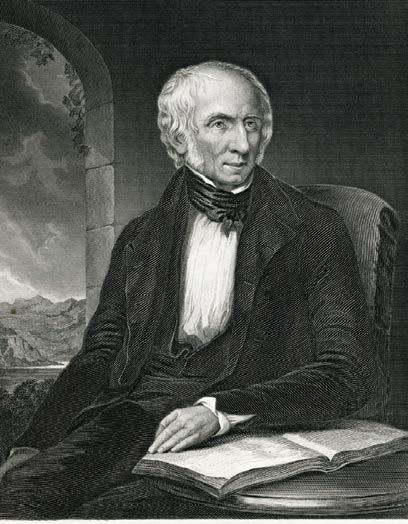


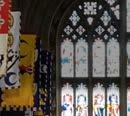
49 DECK THE HALLS
Soak up the atmosphere of Yuletides past in a stately home decorated for Christmas
 Balmoral Castle
Balmoral Castle
www.britain-magazine.com
EDITOR'S LETTER 16 56
BRITAIN Regency London Explore Salisbury Britain's ghost towns WIN stay in beautiful Royal Deeside PAGEANTRY & MAJESTY BELOVED BALMORAL Highland haven ROYAL VERSES Poets Laureate through the ages Final farewell Queen Elizabeth II THE OFFICIAL MAGAZINE
Cover image: Queen Elizabeth II’s coffin is carried into St George’s Chapel, Windsor © PA Images/Alamy/Paul Popper/ Popperfoto/GettyPHOTOS: © VISIT SCOTLAND/PAUL TOMKINS/TRAVELER116/PA IMAGES/ALAMY @BRITAINMAGAZINE @BRITAIN MAGAZINE FACEBOOK/BRITAINMAGAZINE For the best articles straight to your inbox, sign up to our free BRITAIN newsletter at www.britain-magazine.com/newsletter 41
REGULARS
6 LETTERS
Share your stories and memories of Britain
9 THE BULLETIN
A glimpse of Roman Britain, Richard III remembered, and a festive display

24 COMPETITION
Win a luxury stay in Royal Deeside
75 CITY GUIDE: SALISBURY
Home to the tallest cathedral spire in Britain and the world’s best-preserved Magna Carta, Salisbury is a historic treasure trove

80 A DAY WITH...
Charlotte Lloyd Webber, whose creative displays light up Castle Howard at Christmas
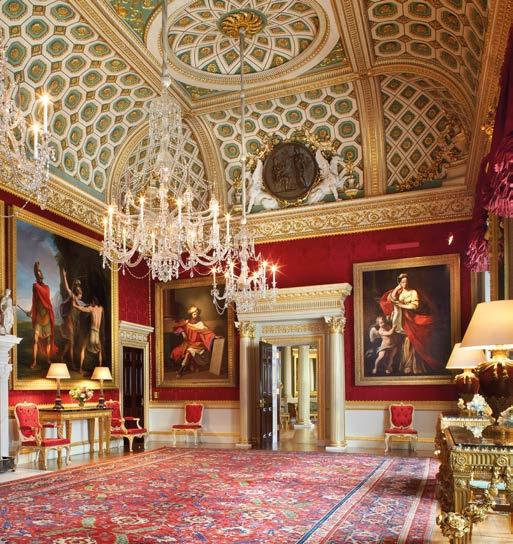
82 THE GREAT BRITISH QUIZ
Test your knowledge of Britain’s landmarks


FEATURES
56 PAGEANTRY & MAJESTY
The grand state funeral for Britain’s longest-serving monarch drew on royal traditions and ceremonies that date back centuries
63 SANDWICH
One of Britain’s best-preserved medieval settlements, this pretty Kent town has a fascinating history
66 PASSING THE TEST
The timeless Test Valley, criss-crossed with chalk rivers and dotted with quaint villages, sits in a landscape that’s long been revered for its pastoral beauty
www.britain-magazine.com
BRITAIN is the official magazine of VisitBritain, the national tourism agency.

BRITAIN is published by The Chelsea Magazine Company Ltd, Jubilee House, 2 Jubilee Place, London SW3 3TQ
Tel: 020 7349 3700
Email: info@britain-magazine.com
Editorial
Editor Natasha Foges
Art Editor Petra Manley-Leach
Assistant Editor Henrietta Easton
Advertising
Group Sales Director Catherine Chapman
Head of Sales Operations Jodie Green
Advertising Manager Daisy Welch
Senior Sales Executive Melissa Arancio
Publishing Chairman Paul Dobson
Managing Director James Dobson
Publisher Simon Temlett
Chief Financial Officer Vicki Gavin
EA to Chairman Sophie Easton
Subs Marketing Executive Bret Weekes
For VisitBritain Sarah Wagner
Printed in England by William Gibbons Ltd
Production All Points Media
SUBSCRIPTION ENQUIRIES
USA and Canada: www.britsubs.com/britain Tel: 1-888-321-6378 (toll free)
Email: btncustserv@cdsfulfillment.com
Post: BRITAIN PO Box 37518, Boone, IA 50037-0518 (USA only); OR BRITAIN 1415 Janette Avenue, Windsor, Ontario N8X 1Z1 (Canada only)
UK and Rest of World: www.subscription.co.uk/chelsea/help Tel: +44 (0) 1858 438 878
Email: britain@subscription.co.uk
Post: BRITAIN CDS Global, Sovereign Park, Market Harborough, LE16 9EF, UK
Did you know you can manage your subscription online?
Oversee your print and digital subscriptions online today simply by signing up at https://www. subscription.co.uk/chelsea/solo/. Stay up to date with the latest issues, update your personal details, and even renew your subscription with just a click.
Annual subscription rates (6 issues)
UK – £35; Europe – £45 USA and Canada – US $75 Australia – AUD $105 Rest of World – £55 www.britain-magazine/subscribe Back issues
www.chelseamagazines.com/shop News distribution USA and Canada: NPS Media Group, 2 Enterprise Drive, Suite 420, Shelton, CT 06484. UK and Rest of World: Seymour, 2 East Poultry Avenue, London EC1A 9PT, UK Tel: +44 (0)20 7429 4000
BRITAIN (ISSN 1757-9732) (USPS 004-335)
is published bi-monthly by The Chelsea Magazine Company, Jubilee House, 2 Jubilee Place, London SW3 3TQ, UK Distributed in the US by NPS Media Group, 2 Enterprise Drive, Suite 420, Shelton, CT 06484. Periodicals postage paid at Shelton, CT and other mailing offices.
POSTMASTER: Send address changes to BRITAIN PO Box 37518, Boone, IA 50037-0518

Publications Mail Agreement Number 41599077, 1415 Janette Ave, Windsor, ON N8X 1Z1. Canadian GST
Registered Number 834045627 RT0001
© The Chelsea Magazine Company Ltd., 2022. All rights reserved. Text and pictures are copyright restricted and must not be reproduced without permission of the publishers
The information contained in BRITAIN has been published in good faith and every effort has been made to ensure its accuracy. However, where appropriate, you are strongly advised to check prices, opening times, dates, etc, before making final arrangements. All liability for loss, disappointment, negligence or damage caused by reliance on the information contained within this publication is hereby excluded.
The opinions expressed by contributors to BRITAIN are not necessarily those of the publisher or VisitBritain.
www.britain-magazine.com
4 BRITAIN
27
SCOTLAND 75 THE OFFICIAL MAGAZINE PHOTOS: © JARROLD PUBLISHING/SPENCER HOUSE/ASH MILLS 2012
THE PERFECT GIFT FOR FAMILY & FRIENDS Why not give a BRITAIN subscription this Christmas, with up to 31% o ? USA/Canada phone 888-321-6378 (quote code X256N1), or online at www.britsubs.com/britain UK/Rest of World phone +44 (0)1858 438878 (quote code CBRTXM22), or online at www.chelseamagazines.com/ CBRTXM22 IN THIS ISSUE ENGLAND EIRE WALES WITLEY COURT p34 NORTHERN IRELAND SANDWICH p63 SALISBURY p75 HOLKHAM HALL p48 ROYAL DEESIDE p16 TEST VALLEY p66 CASTLE HOWARD p80

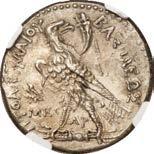



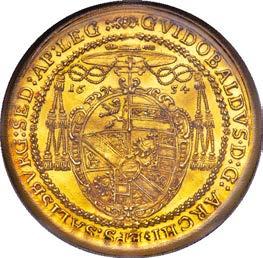


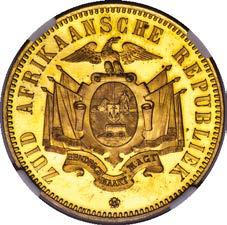





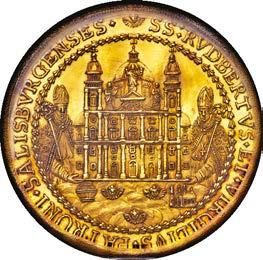
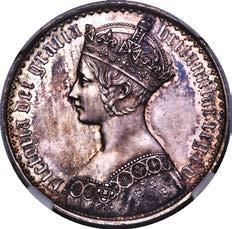


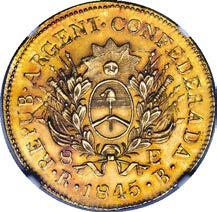
WORLD & ANCIENT COINS PLATINUM SESSION & SIGNATURE® AUCTIONS Dallas | November 2–4 Highlights from Our October Platinum Session & Signature® Auctions View all lots and bid at HA.com/3102 DALLAS | NEW YORK | BEVERLY HILLS | CHICAGO | PALM BEACH LONDON | PARIS | GENEVA | BRUSSELS | AMSTERDAM | HONG KONG Always Accepting Quality Consignments in 40+ Categories Immediate Cash Advances Available 1.5 Million+ Online Bidder-Members SICILY. Siculo-Punic. Ca. 264-260 BC. AR 5-shekels or decadrachm NGC Choice XF 5/5 – 2/5, Fine Style PTOLEMAIC EGYPT Ptolemy IV Philopater (222-205/4 BC). AR tetradrachm NGC Choice AU 4/5 – 3/5, Fine Style, die shift Argentina: La Rioja. Provincial gold 8 Escudos 1845-RB MS63 NGC Russia. Nicholas I platinum 12 Roubles 1830-СПЪ AU Details NGC Commodus (AD 177-192). AV aureus NGC Choice AU 5/5 – 5/5 Great Britain: Victoria Proof “Gothic” Crown 1847 PR63 NGC Austria: Salzburg. Guidobald gold 8 Ducats 1654 MS60 PCGS South Africa: Transvaal. Republic giltbronze Proof Pattern “Burgers” 5 Pounds 1874 PR63+ Ultra Cameo NGC India: British India. George IV gold Proof Restrike 2 Mohurs 1835.-(c) PR67 Cameo PCGS Accepting consignments year-round for Select, Showcase, and Signature ® Auctions. Contact a Heritage Consignment Director today for a free appraisal of your collection. Generous cash advances and competitive purchase offers available. +44 (0)207 493 0498 or UK@HA.com Paul R. Minshull #16591. BP 20%; see HA.com. 70076
YOUR LETTERS
Write to us with your thoughts on the magazine and memories of Britain
LAND OF LEGENDS
While watching the beautiful farewell to our beloved Queen Elizabeth II, and seeing your article on Paddington [Vol 90 Issue 5], I painted, during that incredibly moving weekend, my tribute to a much loved Queen. The TV skit brought our Queen so alive and unforgettable. The painting is called Thank you Ma’am…. for everything. And thank YOU!

Katherine S. Brown, Toronto, Canada
I always enjoy BRITAIN, especially the September issue [Vol 90 Issue 4] and the article on King Arthur. ‘Artor’ (Welsh for ‘the bear’) was the battle name for Owain Ddantgwyn, a 5th-6th century king of Britain who battled the Saxons and the subject of Graham Phillips’ books, King Arthur: The True Story and The Lost Tomb of King Arthur. Arthur’s father, Uther Pendragon, ‘the Red Dragon’, is remembered today in the flag of Wales and the bear as the symbol of the Earls of Warwick. As my 3rd grade teacher told my class in 1955, Behind every myth and legend, there is a kernel of truth. So it is with Arthur. Thanks again for a marvelous magazine that I always enjoy reading.

Joan Wickham Sugg, Tarboro, North Carolina, USA
MEMORIES OF THE TITANIC
Your article on Belfast’s Titanic legacy [Vol 90 Issue 5] brought back memories of our Pirrie Family gathering centred around the 100th anniversary of the launch of the RMS Titanic on 31 May 2011. Lord Pirrie, the grandson of Captain William and Eliza (Morrison) Pirrie and first cousin to my great grandfather, was the head of Harland & Wolff, the world’s largest shipbuilding firm. H & W had partnered with the White Star Line to build the Titanic. His nephew, Thomas Andrews, was the major design architect of the ship. Sadly, Andrews perished in the sinking of the ship among 1,517 others, many of whom had been workers at Harland & Wolff.
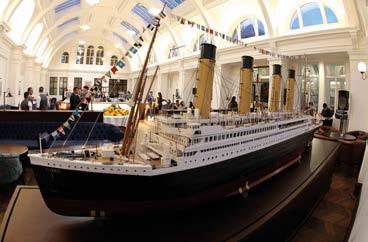
A short service offered our family prayers on the Belfast docks at 7am on 31 May 2011.
Movingly, at that time all the ships in Belfast Harbour sounded their horns to remember both the launch of the Titanic and the gathering of our family. Today, many of the family remain in the Belfast area and the rest are scattered across the UK, Europe, Canada, South Africa, the USA and Australia.
Sandra Thorne, Rothesay, NB, Canada
& from our Facebook followers...
...some memories of Queen Elizabeth II:
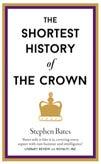
I was among the crowd with my parents who saw Her Majesty on the balcony of Buckingham Palace on the last day of the Platinum Jubilee celebrations in June. A memory I will always treasure and it was the loudest time I’d sung God save the Queen Max Beale
I have travelled from California to the UK more than any other region in the world. I’ve visited Windsor Castle twice, Buckingham Palace, and Sandringham in Norfolk, simply to know I am standing in the homes of the beloved Queen Elizabeth II. I wish I had caught a glimpse of her.
Polly Curtis
Our star letter wins The Shortest History of the Crown by Stephen Bates, a lively commentary on a 1,800-year story, providing dazzling insight into royal custom and ritual (£12.99, oldstreetpublishing.co.uk).
6 BRITAIN www.britain-magazine.com
STAR LETTER THANK YOU MA’AM WRITE TO US! By post: Letters, BRITAIN, The Chelsea Magazine Company, Jubilee House, 2 Jubilee Place, London, SW3 3TQ Via email: editor@britain-magazine.com FOLLOW US! Twitter: @BritainMagazine Instagram: @britain_magazine Facebook: www.facebook.com/BritainMagazine Pinterest: www.pinterest.com/britainmagazine PHOTO: © MATT JESSOP

SATURDAY 10 DECEMBER – SUNDAY 15 JANUARY www.palladiumpantomime.com

The BULLETIN


A glimpse of Roman Britain, Richard III remembered, and a festive display

OPENING

Rome in a day

One of Britain’s finest hotels, The Newt, a Georgian manor set in a magnificent 1000-acre country estate, has upped its offering with the opening of a reconstructed RomanoBritish villa found on the estate, dating back to 351 AD. Villa Ventorum, translating to ‘Villa of The Winds’, is the most
ambitious reconstruction of a Roman villa ever undertaken in Britain. Visitors will enjoy a sensory experience of life in a Roman Britain household, including the sights, sounds and smells of its daily rituals, and you can even book a Roman food tasting to complete the experience. thenewtinsomerset.

HISTORY / NEWS / REVIEWS / INSPIRATION PHOTO: © CRAIG AUCKLAND/FOTOHAUS
ANNIVERSARY
King in the car park
In 2012, having been lost for more than half a century, the remains of King Richard III, who was killed at the Battle of Bosworth in 1485 but whose body was never found, were finally discovered in a car park in Leicester. Ten years on, a new comedy-drama film The Lost King, starring Sally Hawkins and Steve Coogan, tells the story of Phillipa Langley, who took on the country’s most eminent historians and whose persistence resulted in one of the most important archaeological discoveries in British history. The Lost King also aims to tell the story of the controversial King Richard. Villainous or misunderstood –that’s for you to decide… The Lost King will be in UK cinemas from 7 October, and in US cinemas later in the year.


SHOPPING
Garden Pottering
Gardening enthusiasts, animal lovers and Beatrix Potter fans alike will adore these charming fine bone china mugs from the V&A museum shop (£10). Celebrating the museum’s recent exhibition Beatrix Potter: Drawn to Nature, in collaboration with the National Trust, the whimsical watercolour depicts a group of busy guinea pigs dressed to the nines, and hard at work in the garden. Perfect for enjoying a cup of tea outdoors, just as Beatrix would have done.

www.vam.ac.uk/shop
EVENT
Winter wonderland
This Christmas, Winchester Cathedral’s light and sound show Star of Wonder is set to be a mesmerising experience of light, colour and music inside the beautiful and historic cathedral (13-18 December). The award-winning artistic collaboration Luxmuralis will take visitors on an uplifting and magical journey as they immerse themselves in a sky full of stars, walk through stunning light projections, and hear bespoke music installations, filling the sacred space and transforming the architecture of the majestic building. What better way to get into the Christmas spirit?
www.winchester-cathedral.org.uk
A set of rare 18th-century tapestries which had been cut up by their Victorian owner have recently returned to their historic home, Tudor mansion The Vyne, in Hampshire. The tapestries are believed to have been created by John Vanderbank, the leading weaver of the time, and reflect the period’s romanticised view of Asian art and culture, with monkeys, wild cats and fantastical deities. In the 19th century, The Vyne’s owner cut up the tapestries to line the walls of his new billiard room and, years later, they were removed from the house when a leak threatened to damage them. After extensive conservation, the tapestries are back in their rightful place, showing their vivid colours and designs more clearly than ever.

www.nationaltrust.org.uk
 Life’s rich tapestry
Life’s rich tapestry
ART
PHOTOS: © GRAEME HUNTER/RAH PETHERBRIDGE/THE SOCIETY OF ANTIQUARIES www.britain-magazine.com10 BRITAIN HISTORY / NEWS / REVIEWS / INSPIRATION
Richard,
Set between the two buildings of the Old Royal Naval College in Greenwich, London, the Queen’s House was England's first classical building, built in the 17th-century by architect Inigo Jones for Anne of Denmark, as a gift from her husband, James I.
To mark the ten-year anniversary of the discovery of Richard III’s remains, an exhibition at the Wallace Collection will explore how Richard has been imagined through history. One of history’s most notorious villains since the 16th century, he has been portrayed as a usurper and a murderer, his physical deformities exaggerated to

Four hundred years later, the splendid royal villa is due to reopen on 11 October following extensive renovations, which have seen an overhaul to the galleries housing its famous
collection of art – including key works by Gainsborough and Hogarth – and original features, such as the Tulip Staircase. If that’s not reason enough to visit, it is likely to be the home of the historic Armada portrait of Queen Elizabeth I (pictured above), one of the most iconic images of any British monarch. The painting has been the subject of intensive fundraising to save it for the nation since it was put up for sale. With the
further disdain his memory, but modern scholarship has shown that in many ways he was a capable and compassionate monarch. The exhibition (until 8 January 2023) will use objects to explore what we know of the king and why history has treated him so badly. www.wallacecollection.org
reimagined EXHIBITION
These little rolls are perfect for using up the flesh of a scooped-out pumpkin lantern

RECIPE
Pumpkin Rolls
Britain’s favourite TV cooking show, The Great British Bake Off (The Great British Baking Show in the US), returns this autumn. Why not join in with a recipe from A Bake for All Seasons (£22; www.littlebrown.co.uk)? The book includes recipes from Prue, Paul and the 2021 bakers, so you can create your own culinary masterpieces at home.
Ingredients:
500g strong white bread flour
7g fast-action dried yeast
2 tsp caster sugar
1 tsp salt
1/4 tsp ground turmeric
225–250ml whole milk, plus 1 tbsp to glaze
150g pumpkin purée
2 tbsp olive oil
1 egg, to glaze
6–7 walnut halves, cut in half
12–14 pieces of fine kitchen string, each about 60–70cm long (1 per dough ball)
2 baking trays, lined with baking paper
Method:
Tip the flour into the bowl of a stand mixer fitted with the dough hook. Add the yeast, sugar, salt and turmeric and mix to combine. Warm the milk until lukewarm and add it to the bowl with the pumpkin purée and olive oil. Mix on low speed until combined, then increase the speed slightly and knead for a further 5 minutes, until the dough is smooth and cleanly leaves the side of the bowl.
Shape the dough into a neat ball. Lightly oil a mixing bowl and place the dough inside. Cover and leave in a draught free place at room temperature for about 1 hour, until doubled in size. Turn out onto a lightly floured work surface. Knead lightly for 20 seconds. Divide into 12–14 portions – it doesn’t matter if they’re not the same size. Shape each into a tight, smooth and neat ball.
Lay a length of kitchen string on the work surface. Place one dough ball in the middle of the string, then bring each end up and cross them over the dough ball as if wrapping a parcel. Without tightening the string around the dough, carefully turn the dough ball over. Repeat this wrapping with the string so that it marks out 8 sections of the dough ball. Tie in a knot to secure and place the ball on a lined baking tray with the knot underneath. Repeat with the remaining balls. Cover loosely and leave to prove at room temperature for about 45 minutes, until nearly doubled in size.
Meanwhile, beat the egg with the 1 tablespoon of milk and heat the oven to 180°C/160°C fan/Gas 4. Brush the rolls with egg wash and bake for 25 minutes, until risen and deep golden brown. Leave to cool for 2–3 minutes, then snip off the string. Press a piece of walnut into the top of each pumpkin for a stalk. Leave to cool.
READING CORNER
The Game of Hearts: The lives and loves of Regency women by Felicity Day (£22, Blink Publishing). Follow six leading ladies from matchmaking to matrimony in Regency London.

The Anglo-Saxons by Marc Morris (£10.99, Penguin). The renowned medieval historian tells the extraordinary history of England’s foundations after Britain left the Roman Empire.
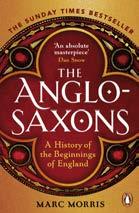
Queens of the Age of Chivalry by Alison Weir (£25, Penguin). In the third volume of her history of the medieval Queens of England, Weir uses personal letters to tell a remarkable story.

Secret Gardens of the South East: A private tour by Barbara Segall (£22, Quarto). A stunning photographic tour of the beguiling gardens of Kent, Sussex and Surrey.

Queen of our times: The life of Elizabeth II by Robert Hardman (£20, Pan Macmillan). A touching tribute to the inspirational life of Britain’s longestreigning monarch, by the celebrated royal biographer.

Take inspiration for your British adventures from these great reads
PHOTO: © ANT DUNCAN 12 BRITAIN www.britain-magazine.com
mining










contemporary coastal barn conversions to charming thatched cottages, we’ve hand-picked the very best properties to bring you holiday memories to treasure.






















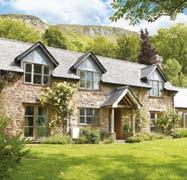
www.britain-magazine.com BRITAIN 13 From
ruralretreats.co.uk 01386 897 959 A portfolio of over 600 luxury, self-catering holiday homes in the UK and Northern Ireland Find your special place Do you have a property you would like to let with Rural Retreats? If so, please get in touch with one of our experienced Property Managers today. newowners@ruralretreats.co.uk Experience the real Cornwall come rain or shine with its beauty, history, heritage and hospitality. Our award winning, personalised, and private tours, offer a unique opportunity to truly experience Cornwall. You have seen it on the televisions, now visit in the flesh, discovering dramatic cliffs, golden sandy coves, Cornwall’s
heritage, picturesque, thatched fishing villages, and quaint harbours. Your local, friendly and knowledgeable guide will drive you in comfort in an 8-seater air-conditioned Volkswagen bus, allowing you to sit back, relax and enjoy your Cornwall experience A complementary, traditional, Cornish cream tea picnic is included in every tour Now taking bookings for 2023 Wish you were here... Join us on a private guided tour of Cornwall, England. We promise it will be the highlight of your vacation Visit us at WWW.EXPERIENCECORNWALLTOURS.CO.UK Enquire by e-mail BOOKINGS@EXPERIENCECORNWALLTOURS.CO.UK Call us 0044 1872 396143 In partnership with Prepco Travel - US Agent –who can build a custom package to England 330 284 4709 (EDT) or email barrydevo@prepcotravel.com Be sure to mention Promo Code PREPCO22LW
In memory of HM
Elizabeth
Queen
On 8 September 2022, Elizabeth II, Britain’s longest-reigning monarch, sadly passed away at Balmoral Castle. Queen of the United Kingdom of Great Britain and Northern Ireland for 70 years, Her Majesty’s tenure can be defined by a sense of duty that has made her one of the world’s most respected heads of state.
Born Princess Elizabeth Windsor on 21 April 1926, she was the first child of the Duke and Duchess of York. During the Second World War, determined to do her bit, the 18-year-old princess joined the Women’s Auxiliary Territorial Service. She married Philip Mountbatten at Westminster Abbey in 1947, then welcomed her first child, Prince Charles, in 1948, and Princess Anne, in 1950.
As the nation mourns the passing of Her Majesty Queen Elizabeth II, we pay tribute to her remarkable life and reign
Elizabeth In memory of HM
IIQueenAs the nation mourns the passing of Her Majesty Queen Elizabeth II, we pay tribute to her remarkable life and reign
reign. A public outpouring of respect for the monarch would follow in 1977 to mark her Silver Jubilee.
On 8 September 2022, Elizabeth II, Britain’s longest-reigning monarch, sadly passed away at Balmoral Castle. Queen of the United Kingdom of Great Britain and Northern Ireland for 70 years, Her Majesty’s tenure can be defined by a sense of duty that has made her one of the world’s most respected heads of state.
II ER
1926
Born Princess Elizabeth Windsor on 21 April 1926, she was the first child of the Duke and Duchess of York. During the Second World War, determined to do her bit, the 18-year-old princess joined the Women’s Auxiliary Territorial Service. She married Philip Mountbatten at Westminster Abbey in 1947, then welcomed her first child, Prince Charles, in 1948, and Princess Anne, in 1950.
Her relatively quiet life as a wife and mother came to an abrupt end in 1952 when she learned of the death of her father, King George VI, while on a royal tour of Kenya. She was crowned at the tender age of 27 in 1953, though she became Queen the moment her father died the previous year.
2022
II
1926
Another decade, the 1990s, proved more challenging. In particular, the Queen’s selfproclaimed “annus horribilis” in 1992, which saw Princess Anne divorce and Prince Andrew and Prince Charles separate from their wives amid tabloid scandal. Then, in November, a fire caused devastating damage to her favourite home, Windsor Castle. The next few years continued in a tragic vein with the death of Princess Diana in 1997 and the loss of her mother and sister in 2002. Yet the Queen would ride out these storms, charting a course to smoother waters for a modernised monarchy.
2022 —
reign. A public outpouring of respect for the monarch would follow in 1977 to mark her Silver Jubilee.
ERAnother decade, the 1990s, proved more challenging. In particular, the Queen’s selfproclaimed “annus horribilis” in 1992, which saw Princess Anne divorce and Prince Andrew and Prince Charles separate from their wives amid tabloid scandal. Then, in November, a fire caused devastating damage to her favourite home, Windsor Castle. The next few years continued in a tragic vein with the death of Princess Diana in 1997 and the loss of her mother and sister in 2002. Yet the Queen would ride out these storms, charting a course to smoother waters for a modernised monarchy.
The loss in April 2021 of Prince Philip, her beloved husband of 73 years and her “strength and stay”, marked the end of an era. Despite speculation that she planned to abdicate, the Queen continued to reign with the grace and humanity for which she was renowned.
Her family grew to include two more princes – Andrew and Edward – in the 1960s, a decade of political and social change that was overseen by Elizabeth II’s diligent
Her relatively quiet life as a wife and mother came to an abrupt end in 1952 when she learned of the death of her father, King George VI, while on a royal tour of Kenya. She was crowned at the tender age of 27 in 1953, though she became Queen the moment her father died the previous year.
14 BRITAIN Right: Famous for her brightly coloured outfits, the Queen once said, 'If I wore beige, nobody would know who I am.'
Her family grew to include two more princes – Andrew and Edward – in the 1960s, a decade of political and social change that was overseen by Elizabeth II’s diligent
Right: Famous for her brightly coloured outfits, the Queen once said, 'If I wore beige, nobody would know who
The Queen’s Platinum Jubilee in June 2022 celebrated her astonishing 70-year reign, making her the longestreigning monarch in British history. She will be dearly missed by the Royal Family; indeed, by our entire nation, and many more the world over.
The loss in April 2021 of Prince Philip, her beloved husband of 73 years and her “strength and stay”, marked the end of an era. Despite speculation that she planned to abdicate, the Queen continued to reign with the grace and humanity for which she was renowned.
The Queen’s Platinum Jubilee in June 2022 celebrated her astonishing 70-year reign, making her the longestreigning monarch in British history. She will be dearly missed by the Royal Family; indeed, by our entire nation, and many more the world over.
www.britain-magazine.com
PHOTOS : © 2021 MAX MUMBY/INDIGO
—

Highland haven
 PHOTO:
Queen Elizabeth II spent her final days at Balmoral in Royal Deeside, a beautiful part of Aberdeenshire whose royal connections stretch back to Queen Victoria
WORDS SALLY COFFEY
PHOTO: © VISIT SCOTLAND/PAUL TOMKINS
PHOTO:
Queen Elizabeth II spent her final days at Balmoral in Royal Deeside, a beautiful part of Aberdeenshire whose royal connections stretch back to Queen Victoria
WORDS SALLY COFFEY
PHOTO: © VISIT SCOTLAND/PAUL TOMKINS
16 BRITAIN www.britain-magazine.com

BRITAIN 17www.britain-magazine.com royal deeside
On8 September, Her Majesty Queen Elizabeth II passed away peacefully at Balmoral Castle, her beloved holiday home in the Highlands. Just two days before she died, serving her nation until the very end, the Queen had held an audience with Britain’s new Prime Minister, Liz Truss, at the Scottish estate.

When the Queen’s coffin left Balmoral, it passed slowly through the villages of Royal Deeside, allowing the thousands that lined the route to bid a final farewell to the country’s longest-serving monarch, and a woman whom many locals considered a dear neighbour.
The Queen had visited the Scottish estate every summer, continuing the traditions of her own childhood. She and Prince Philip were able to live some semblance of a normal life here, often surrounded by their children and grandchildren.
Heading up in late July, it is tradition for the Royal Family to stay at Craigowan Lodge on the estate for the first week of their visit, before moving into the castle once it is closed to visitors in August, where they usually stay until October.
Set in 50,000 unspoilt acres, this beautiful expanse of Scottish Highlands provides what must have been a refreshingly rural contrast to the splendour of the Queen’s homes in London and Windsor. She was often seen walking around the estate dressed informally in tweed and headscarves; in fact, so relaxed did she become at Balmoral that the late Prime Minister Margaret Thatcher is said to have sent her a pair of washing-up gloves one Christmas after witnessing her at Balmoral washing up with bare hands.
Her Majesty had a strong family connection to Balmoral: her father King George VI and his wife (later Her Majesty Queen Elizabeth The Queen Mother) were fond of it, and princesses Elizabeth and Margaret spent many happy times here.
But Balmoral as we know it today – a grand Scottish

Previous page: Balmoral Castle Above: Queen Elizabeth and her son, now King Charles III, walking to the Balmoral Cricket Pavilion in 2021
baronial palace topped with numerous turrets – wouldn’t be here at all were it not for the late Queen’s great-great-grandparents.
Queen Victoria made her first visit to Scotland in 1842 and quickly fell in love with it. However, it was on subsequent visits, when she explored the enigmatic Highlands, that Victoria’s love was cemented. And it wasn’t just Victoria for whom Scotland provided a sense of escapism. Prince Albert was said to have been taken with the landscapes as much as his wife, as they reminded him of his German homeland.
Indeed, it may well have been Albert who was the driving force behind the purchase of Balmoral, then a more modest country house, which stood within acres of untamed heatherclad hills and moorland, with views that seemed to stretch on forever.
It is said that Albert first became aware of the property through the paintings of James Giles, who had been commissioned to do a series of watercolours of the house and the estate.
By 1848 the couple had taken out a lease on Balmoral – without ever having actually set foot there – and by 1852 they had purchased the estate outright. Shortly after buying Balmoral, Victoria and Albert began building a new castle, more befitting their royal status, some 100 yards northwest of the existing building.
Work on Balmoral was completed in 1856 and the couple relished their time here, spending their days picnicking with their children and exploring the estate and beyond. One of Victoria’s favourite spots for a picnic was the Linn of Dee on the Mar Lodge Estate, an area of natural wilderness in the Cairngorms, three miles west of Braemar, where she is known to have stopped to change horses.
Together, Victoria and Albert helped make the Highlands fashionable, celebrating the traditions – tartan, shooting, Highland games, dancing – that the novelist Sir Walter Scott had begun romanticising several decades before.
After Albert’s sudden death in 1861, Balmoral became
18 BRITAIN www.britain-magazine.com
ILLUSTRATION: © MICHAEL A HILL. PHOTOS: © REUTERS/KEYSTONE PRESS/PICTORIAL PRESS LTD/ALAMY/VISITSCOTLAND/JAKUB IWANICKI
Clockwise from top left: Princess Elizabeth arrives at Balmoral with her sister, Margaret, and her parents; Queen Elizabeth II and Prince Philip with their children at Balmoral; the River Dee flows through picturesque landscapes



BRITAIN 19www.britain-magazine.com royal deeside
The fairytale 16th-century Crathes Castle is a turreted tower house with glorious gardens to explore

a haven for the queen, and gradually, being here helped ease her grief. It was at Balmoral that she had first met John Brown – the Scotsman had been Albert’s personal ghillie – with whom she formed a strong affection.
Balmoral Castle is still a private home – unlike Buckingham Palace and Windsor Castle, it’s not an official royal residence – which means that much of it is out of bounds to visitors. However, though you can’t visit the private quarters, it is the location that makes a visit here so wondrous.
A very good audio guide takes you round the castle exterior and some of the grounds, where red squirrels can be spotted leaping between the branches of the trees. You can also enter the Ballroom, which has hosted the annual Ghillies Ball – a dance for the estate’s staff – since Queen Victoria’s time.

En route to the Palace of Holyroodhouse in Edinburgh, the hearse bearing the Queen’s coffin passed by Crathie Kirk – the small granite church where she worshipped every Sunday during her summer holidays in the Highlands. John Brown, Queen Victoria’s friend, is buried in the little churchyard.

It is easy to see what has drawn the Royal Family to the area for centuries. The countryside around the estate is wonderfully picturesque. The River Dee from which the region takes its name is a magnet for anglers who come to fish its salmon-rich waters, while pretty villages like Ballater and Braemar beckon you to stay awhile.
In 1866 with the arrival of the railway station at Ballater, just east of Balmoral, the Highlands village became a tourist centre. Sadly, the village was struck by a
terrible fire in 2015, followed just months later by catastrophic flooding, but thanks to King Charles (when he was prince and Duke of Rothesay), who was instrumental in the village’s revival, buildings such as the Old Royal Station, now home to a very good restaurant, have been revived and restored.
It’s just outside the town of Braemar, to the west of Balmoral, a place popular with hillwalkers, that the annual Braemar Gathering takes place. Probably the most famous of all the Highland games, this event, first attended by Queen Victoria in 1848, is still the one where senior members of the Royal Family can often be seen among the spectators; the late Queen was a regular visitor. Even if you can’t visit during the games, held on the first Saturday in September, the Braemar Highland Games Centre is a great place to learn about this most Scottish of traditions.
On the outskirts of the village is the L-shaped Braemar Castle, which has been run by the local community for the past 15 years and which is currently undergoing a huge restoration programme to the tune of £1.6m. It is due to reopen in July 2023.
Another reason visitors are drawn to Braemar is for the Fife Arms. Part art gallery, part luxury hotel, since opening its doors in 2018 this former Victorian coaching inn has become one of the most luxurious places to stay in the whole of Scotland.
Elsewhere in the region, you can take a nostalgic train ride on the Royal Deeside Railway in the far east of the region, or visit one of the region’s many castles, such as the fairytale 16th-century Crathes Castle, a turreted tower house with glorious gardens to explore. Or drop by the
Clockwise from far left: Crathes Castle dates back to the 16th century; the Braemar Highland Games are the largest and most prestigious in Scotland; Queen Elizabeth II and King Charles at the Braemar Highland Games; Crathie Kirk

BRITAIN 21www.britain-magazine.com royal deeside
PHOTOS: © JOHN BRACEGIRDLE/PA IMAGES/ALAMY/DAVID N ANDERSON/SHUTTERSTOCK/GONZALO BUZONNI
Royal Lochnagar Distillery, just a mile from Balmoral, which uses age-old techniques to distill its malts. Victoria and Albert visited with three of their children in 1848, granting it a Royal Warrant shortly afterwards.

Queen Victoria described Balmoral as her “own dear Paradise” and it seems that the sense of release away from royal duties that she enjoyed here has been passed down to subsequent generations of royals.
Offering an environment in which she could really be herself, it’s no wonder it was at Balmoral that our late Queen sought sanctuary. And it is tting that it was at her beloved Highlands home that she spent her nal days, bringing to a close a remarkable and unparalleled reign of seventy years.
Top to bottom: The Fife Arms, housed in a former Victorian Coaching Inn, is now one of Scotland’s most luxurious places to stay; the Lochnagar Distillery was granted a Royal Warrant by Queen Victoria
THE PLANNER
GETTING THERE
Aside from the heritage railway, there is no working train station in Royal Deeside. The best way to reach the region is via Aberdeen, which has an international airport and train links to many parts of the UK. From Aberdeen it’s around an hour’s drive west to Ballater – the main entry point to Royal Deeside – while buses from Aberdeen will get you there in just over two hours.
www.aberdeenairport.com; www.scotrail.co.uk; www.stagecoachbus.com
WHERE TO STAY
Rooms at the Fife Arms, a beautiful five-star hotel built in the 19th century, are lavishly decorated with period wallpaper, antique furniture and original artworks, while you can sip on fine single malt whiskies in a fireside armchair in

For more on beautiful Scotland, see www.britainmagazine.com
the lounge or feast on wood-fired cooking in the decadent Clunie Dining Room. thefifearms.com

WHERE TO EAT AND DRINK
Serving up fine-dining dishes using fresh, in-season local produce, The Rothesay Rooms started as a pop-up to drive tourism in the village of Ballater following devastating flooding. It’s now a mainstay of the Royal Deeside dining scene. rothesay-rooms.co.uk
i FURTHER INFORMATION

For travel advice and inspiration, go to visitabdn.com/what-to-do/ history-and-heritage/royal-heritage
BUY THE BOOK
Sally Coffey’s latest book, Moon Scotland (£15.99, www. moon.com), is out now.
22 BRITAIN www.britain-magazine.com royal deeside
PHOTOS: © SAM CANETTY-CLARKE/JAROSLAV MORAVCIK
hidden history
REALMARYKINGSCLOSE.COM Step down into


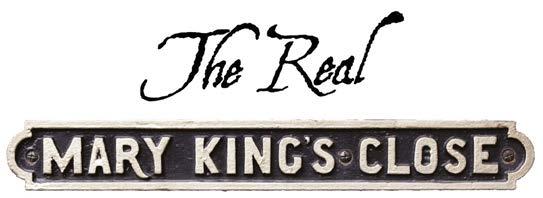

Edinburgh’s 1 hour guided tour follow Edinburgh’s past residents in underground alleyways and hear their real stories. Voted Scotland’s Best Heritage Experience
A LUXURY STAY AT ONE OF SCOTLAND'S MOST HISTORIC HOTELS


Situated on the banks of the River Dee, the 13th-century Maryculter House offers guests an experience like no other. The stunning hotel, one of Scotland ’ s oldest, has retained many of its original features, including its medieval Great Hall, dating back to 1460, and is central to the legends of the Knights Templar. Woven into the fabric of the place are tales of crusading knights and the Jacobite Rebellions, which are brought to life through some of the hotel’s unique guest experiences.

One lucky reader and their guest will win a 2-night stay at this unique hotel, staying in a luxurious junior suite, decorated in elegant contemporary style and overlooking the
ENTRY FORM
hotel’s beautiful grounds. On one night our winners will enjoy a Taste of Aberdeenshire dinner with paired drinks at Poachers, which offers breathtaking views of the river and serves the finest produce Scotland has to offer. Dinner will be followed by a cheese and whisky flight in the atmospheric setting of the Great Hall.
Our winners will also be treated to afternoon tea with a bottle of Champagne, and a hearty Scottish breakfast each morning.

After relaxing and unwinding in the hotel, there is much in the surrounding area to explore. The Aberdeenshire region has no less than 263 castles (including, of course, Balmoral), and some of Scotland’s finest
whisky is crafted in the local distilleries. You can also roam the landscapes so beloved of the Royal Family, from rugged heather moorland to towering Caledonian pine forests to the majestic River Dee. A true Scottish experience awaits you. www.maryculterhouse.com
HOW TO ENTER
For your chance to win this fantastic prize go to www.britain-magazine.com/ competitions/deeside to apply online or fill in the coupon below with the answer to the following question:
Q: How many castles are there in Aberdeenshire?
a) 263 b) 129 c) 67
TERMS AND CONDITIONS
My answer:
Name: Address: ZIP/Postcode:
Tel no: Email:
Closing date for entries is 12pm GMT 16 January 2023. The prize is for two people sharing a junior suite and includes breakfast each morning, dinner on one evening followed by a cheese and whisky flight, and afternoon tea with Champagne on one afternoon. The prize must be redeemed by 31 October 2023, and is subject to availability. Travel and extras other than those featured are not included, and the prize is not transferable.
www.britain-magazine.com
WIN
SEND YOUR COUPON TO: US and Canada readers – Deeside Competition, BRITAIN magazine, PO Box 207, Des Moines, IA 50301, US UK and Rest of World readers – Deeside Competition, BRITAIN magazine, The Chelsea Magazine Company, Jubilee House, 2 Jubilee Place, London SW3 3TQ, UK
Please tick if you are a subscriber of BRITAIN magazine ■ Please tick if you are happy to receive relevant information about new products or services from our competition partners via email ■ post ■ , or phone ■ and/or The Chelsea Magazine Company via email ■ post ■ , or phone ■
✁
competition








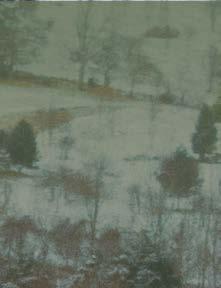






Cabin and Cottages in spectacular, private surroundings in the Deveron Valley Come and stay at the heart of Scotland’s Castle Trail and in easy reach of Royal Deeside and Whisky Speyside www.mayenestate.com | +44 (0)1466711100 | @thegardensatmayen Escape to North Scotland this Winter, where you’ll find peace in nature on Mayen Estate, Banffshire’s best kept secret
YEARS WORLD WIDE













THOUSANDS OF 5-STAR REVIEWS



























































































































































































Step inside London’s longest running immersive experience and be part of the action as Basil, Sybil and Manuel serve up mayhem on a plate alongside a three-course meal and two hours of non-stop laughter.



Celebrate the BBC’s iconic show and experience it like never before… a West End theatre production and dining experience rolled into one, which promises a ‘deliciously entertaining’ night that you won’t forget!







CELEBRATING 25
FAULTYTOWERSDINING.COM/LONDON
LONDONRegency
Where did the Ton, the high-living aristocrats of the late Regency period, spend their time? Discover the London addresses that still tell thrilling tales of this exuberant era
WORDS FELICITY DAY

BRITAIN 27www.britain-magazine.com history
When it came to recreating the London habitat of Regency high society for the smash-hit show Bridgerton, it’s no secret that Netflix turned to Bath, a city famous for its pristine, period-perfect Georgian architecture. But if you want to discover the backdrop to real-life Regency romances, you might consider turning your carriage towards the capital instead, dear reader, because if you know where to look, there are plenty of surviving sights of the Ton’s London to be discovered in the bustling modernday metropolis.

You’ll need to make for the West End, known to its Regency inhabitants as ‘town’ and utterly distinct from the commercial hub that was the City. Any aristocrat worth their salt had a plush pied-à-terre in Mayfair or St James’s, and on a stroll of the still smart streets it’s possible to pick out some of their former residences.
The snug townhouse at No. 4 Chesterfield Street was home to famous dandy and arbiter of gentlemen’s fashion ‘Beau’ Brummell, for example; while the unshowy
brown-brick property at 21 Arlington Street (a few steps from The Ritz hotel) was the town base of the Earl of Sefton and his wife Maria, one of the patronesses of the legendary Almack’s assembly balls. Meanwhile, Albany, an early apartment complex now tucked away behind two much newer buildings on Piccadilly (opposite the upmarket department store Fortnum & Mason) was home to many a Regency bachelor of rank and riches, including the notorious Lord Byron.
Of course, plenty of the Ton’s members had London homes that were more palatial in both size and splendour. Only a few of the once numerous noble mansions survived the wrecking ball that swung with increasing fervour between the 1860s and 1930s, but of those, none offers a better opportunity to step back in time than the gloriously restored Spencer House, open for guided tours once a week. Glimpsed through the trees from Green Park, the
Previous page: George Bryan 'Beau' Brummell Right: The magnificent Great Room at Spencer House
It was mansions like Spencer House that made the most spectacular venues for the balls and parties that were the whole point of the ‘ season ’
28 BRITAIN www.britain-magazine.com

BRITAIN 29www.britain-magazine.com history PHOTOS: PHOTOS: © CHRONICLE/ALAMY/JARROLD PUBLISHING/SPENCER HOUSE
Clockwise from top left: The west front of Spencer House; the splendid ceiling in Spencer House's Painted Room is the earliest complete Neoclassical ensemble in Europe; Lock & Co on London's St James's St is the oldest hat


shop in the world; Berry Bros & Rudd first started weighing customers on their coffee scales in 1765, as at this time there was a fee to be weighed by a doctor; Berry Bros & Rudd, in business since 1698, holds two Royal Warrants



30 BRITAIN www.britain-magazine.com history PHOTOS: © JARROLD PUBLISHING/SPENCER HOUSE
Palladian residence with 50 rooms and a half-acre garden was built for the 1st Earl Spencer in the 1750s, and occupied in the Regency by the 2nd Earl, his wife Lavinia and four of their children.
It was houses like theirs that made the most spectacular venues for the balls and parties that were the whole point of the ‘season’ – the so-called ‘squeezes’ where young aristocrats went to flirt and find their perfect partner. The Spencers’ ballroom was the lavishly gilded Great Room on the first floor, with its beautifully ornate Neoclassical ceiling; the scene of a particularly splendid event in 1805 to mark the ‘coming-out’ into society of their eldest daughter Sarah. Then, the state rooms downstairs –including the Earl’s library – were thrown open to seat the four hundred or so guests who stayed till the supper at 2am.
From their houses, you can follow the Ton to some of the places where they purchased the sumptuous evening attire appropriate for just such an occasion. The red-brick building with portico entrances at numbers 80-82 Pall Mall, for instance, was once home to purveyors of fine fabrics and accessories for the fairer sex, Harding, Howell & Co. And if you walk up St James’s Street from the site of the royal palace with which it shares its name, you’ll find two shops still trading that would be entirely recognisable to Regency eyes: the bow-windowed frontage of Lock & Co, who sold beaver hats to the most fashionable of men, dates from 1810; and the woodpanelled store of wine merchants Berry Bros & Rudd still has in situ their famous scales, on which the likes of Brummell, Byron and esteemed boxer Tom Cribb were weighed in the early 1800s.
As you wander past the latter shop, you might easily miss the adjacent alleyway, down which men in the mould of the rakish Viscount Bridgerton might have sauntered during the season. Pickering Place, today a neat and tidy courtyard, then housed the entrance to a ‘gaming hell’ –an exclusive, underground venue where roulette and hazard were played for high stakes, all in defiance of the laws of the land. Certainly, any young Lord would have been a member of one of the more prominent gentlemen’s clubs that had their premises further up St James’s Street. White’s – the oldest and most prestigious – is still a private members’ club and still occupies the same building at numbers 37-38, with the very same bow window, where the most famous dandies of the Regency once sat and stared down passers-by.


BRITAIN 31www.britain-magazine.com history
Clockwise from above: A satirical cartoon entitled A Peep into Totenham Street or Dillitanti Performers in Training, showing a group of amateur actors; Theatre Royal, Drury Lane; St George's, Hanover Square was a popular wedding venue; the Royal Academy's Summer Exhibition runs every year

By convention, St James’s Street was an all-male enclave – certainly so in the evenings. It’s said that the islands in the road were first installed in the early 1800s to make crossing safer for the inebriated patrons of its clubs and coffee houses.
Other surviving London spaces, however, were places for men and woman alike to see and be seen. During the season, the Ton flocked to see the Royal Academy’s Summer Exhibition in the Great Room at Somerset House. It has recently been returned to the one large, light-filled chamber with high lantern windows that it was then, when the paintings were densely stacked from floor to ceiling.
Still to be found on the south side of Hyde Park, meanwhile, is Rotten Row, where the elite paraded in their carriages or on horseback at the fashionable hour of 5pm – though it’s now a shorter track than the one that stretched from Hyde Park Corner along what is now The Flower Walk in Kensington Gardens. The Gardens themselves were another popular place for promenading, and seemingly also a prime spot for secret assignations between lovers. Time and again, they cropped up in trials for ‘criminal conversation’, the euphemistic term for adultery with another man’s wife.
For evening entertainment, the Ton were supremely fond of the theatre, and you can best follow in their footsteps at the Theatre Royal, Drury Lane, London’s oldest working playhouse. The current building dates from 1812, and with its interiors recently restored to their Regency-era splendour, it is now the largest and most complete Georgian
theatre in Britain, open for guided tours several days a week. The most fitting final stop for any Regency romanceinspired tour of London, however, has to be the church of St George’s, Hanover Square – the most fashionable chapel in which to wed in the era, if the season matched you with your perfect partner. Its imposing classical facade dates from the 1720s; and while the furnishings have changed a little over time, the interior structure has not changed at all since members of the Ton tripped up the steps to exchange their wedding vows, meaning that here, perhaps more than any other place in Mayfair, the spirit of real-life Regency romance echoes down through the centuries.
Felicity Day is the author of The Game of Hearts: The Lives and Loves of Regency Women, published by Blink Publishing on 29 September
BOOK AHEAD
● Spencer House, the city’s only great 18th-century private palace to survive intact, is open every Sunday, except during August, for guided tours. spencerhouse.co.uk
● The Great Room at Somerset House is now home to the Courtauld Gallery’s collection of Impressionist and Post-Impressionist paintings. courtauld.ac.uk

● Guided tours of the newly restored Theatre Royal, Drury Lane last approximately 1 hour. lwtheatres.co.uk/whats-on/theatre-royal-drury-lane-tours

In the evening, you can follow in the Ton’s footsteps at the Theatre Royal, Drury Lane, London’ s oldest working playhouse
32 BRITAIN www.britain-magazine.com history
PHOTOS: © CHRONICLE/NATHANIEL NOIR/ALAMY/SHUTTERSTOCK/CHRIS PICTURES

The sight of abandoned houses – whether a palatial mansion or once-idyllic village – cannot fail to stir the imagination. And each has its own human story to tell



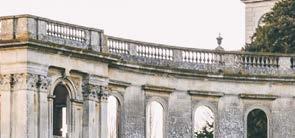














34 BRITAIN www.britain-magazine.com HERITAGE
WORDS ROSE SHEPHERD LOST PROPERTY PHOTOS © ENGLISH HERITAGE TRUST/JASON INGRAM









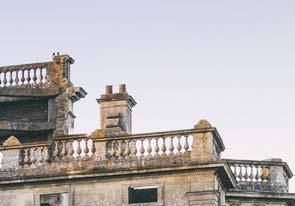






BRITAIN 35www.britain-magazine.com HERITAGE PHOTOS :
Previous page: Witley Court's South Front Clockwise from below: Witley Court's Perseus and Andromeda
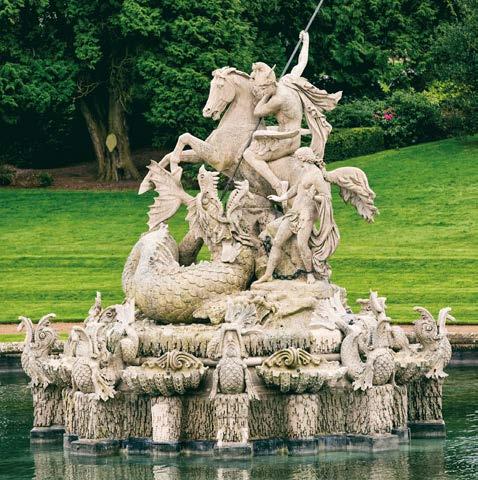
Procol Harum’s 1967 hit A Whiter Shade of Pale is one of the most haunting, enigmatic, elegiac songs in the history of pop music. Haunting, too, and enigmatic was the accompanying video, which shows band members roaming the ruins of a glorious Italianate mansion. Freestanding walls that once enclosed French Renaissance-style interiors shelter emptiness, open to the sky. No water plays in the magnificent Perseus and Andromeda Fountain. This is Witley Court, a spectacular monument to human grandiosity and excess. Built for politician and ironmaster Thomas Foley, who bought the estate in 1665, it remained in the Foley family for 180 years, growing over the generations into one of Europe’s foremost private palaces. Soaring porticoes were added by the Prince Regent’s architect, John Nash, a friend of another Thomas Foley, 2nd Baron, a plump, profligate gambler nicknamed ‘Lord Balloon’.
The debt-burdened Foleys were succeeded by William Ward, later Earl of Dudley, and in turn by Sir Herbert Smith, a carpet manufacturer. When fire gutted a wing in 1937 and the insurers refused to pay, Sir Herbert sold the mansion, with scrappers demolishing it piecemeal.
Freestanding walls that once enclosed French Renaissance-style interiors shelter emptiness, open to the sky
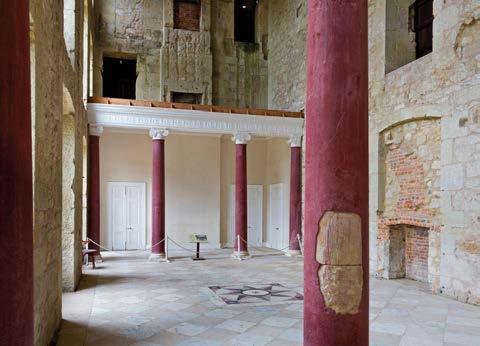
It must have presented a woeful spectacle when it was first cannibalised, but time works its magic on ruins. The religious houses despoiled in the Dissolution of the Monasteries, once abominable eyesores, have grown over centuries into ivy-clad beauties. Contemplation of wrecked buildings invite ‘the romantic and conscious swimming down the river of time’, as Rose Macaulay wrote in Pleasure of Ruins (1954); they speak to us of vanished lives.
Few lives are more colourful than that of Seymour Fleming, promiscuous wife of Sir Richard Worsley, 7th Baronet, the heir to Appuldurcombe House in Wroxhall on the Isle of Wight, a Baroque 18th-century masterpiece in grounds landscaped by Capability Brown. Begun in 1702, it was much extended in the 1770s by Sir Richard, an avid collector of priceless antiquities, whose lawsuit against one of Seymour’s numerous lovers brought him only public ridicule and a shilling in damages, and who left the estate mired in debt.
By 1855 the house was vacant, stripped and up for sale. Between 1901 and 1907 it was home to Benedictine monks, and in the Second World War it served as barracks, before, in February 1943, a German bomber dropped a mine that blew the roof off. From a distance, it appears intact and perfect, but Appuldurcombe is a ghost house, an empty shell, haunted, some say, by a phantom carriage and a brown-clad monk.
Nine months after Appuldurcombe became a casualty of

war, a bombshell no less shattering blew apart the lives of the residents of Imber, a thriving village on Salisbury Plain, with a pub, a school, a rectory and two churches. It arrived in the form of a letter from the Ministry of Defence, instructing that the area was to be “evacuated and made available for training” by no later than 17 December. “It is appreciated that apart from the distress the move will cause you, it must inevitably occasion direct expense for which you have no legal redress against the Department.” Legend has it that the blacksmith, Albert Nash, was found by his wife, slumped over his anvil, weeping like a baby. He would die, broken-hearted, within weeks. As for expense, the cost of “removal of furniture to your new home”
36 BRITAIN www.britain-magazine.com heritage Fountain; Appuldurcombe House; Appuldurcombe's roof was destroyed by a mine in the Second World War
PHOTOS © ENGLISH HERITAGE TRUST/IAN TUSTIN/NORTHSCAPE/ALAMY
From a distance it appears intact and perfect, but Appuldurcombe is an empty shell, haunted, some say, by a phantom carriage and a brown-clad monk
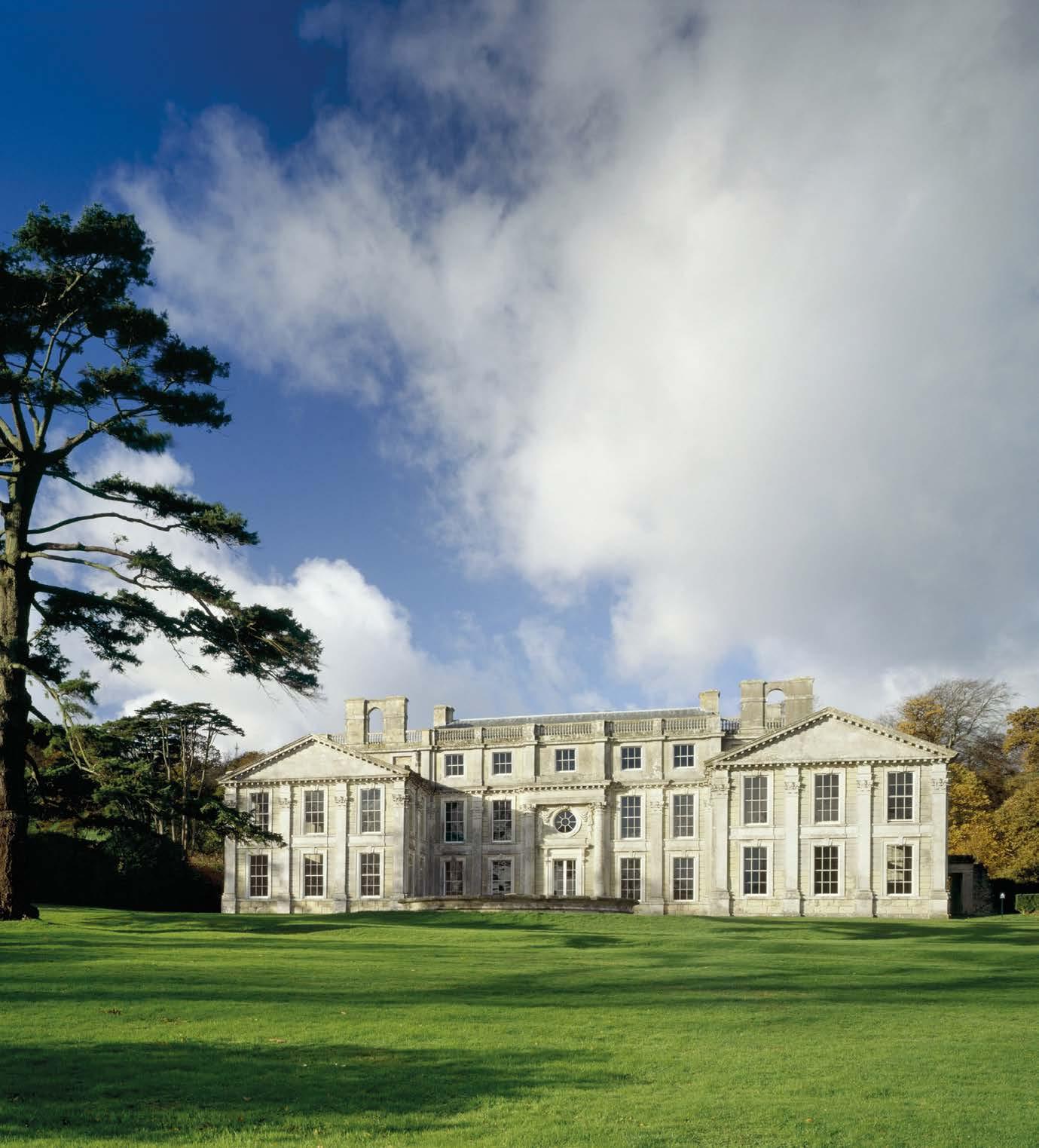
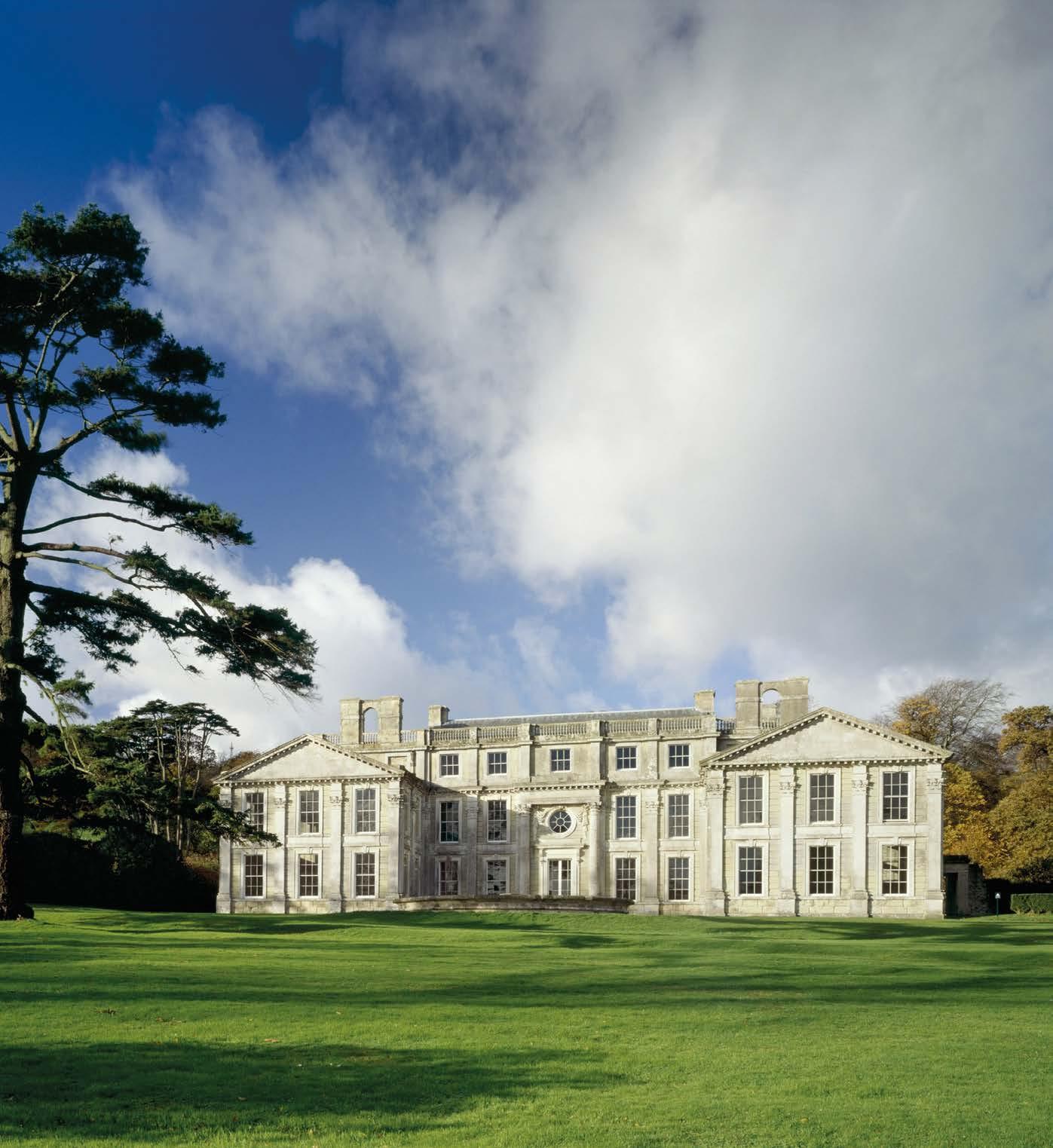
BRITAIN 37www.britain-magazine.com heritage
would be met, or storage charges covered, “until the Imber area is again open for occupation”.
Promises, promises. Never more was Imber ‘open for occupation’. However, on certain dates it is open to sightseers, who find the grave of Albert Nash beside the medieval St Giles’ Church, where the villagers were once baptised and married and sang of all things bright and beautiful. Every August a convoy of London Route Master buses trundles across Salisbury Plain with passengers fascinated to see the vestiges of Imber. You wait a year for the 53A, then 25 come at once.
As the residents of Imber were under notice to evacuate, the 220 residents of Tyneham in Dorset received a letter from one Major General C.H. Miller, advising them that the army needed the surrounding land for “the training of the use in modern weapons of war”, so it must be cleared of civilians. “The government appreciate that this is no small sacrifice… but they are sure that you will give this further help towards winning the war with a good heart.”
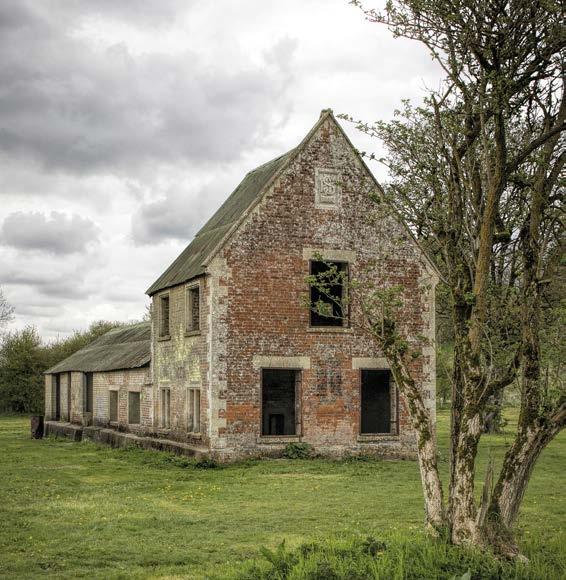
Ordered to quit by 19 December, the villagers left a note on the church door: “Please treat the church and houses with care; we have given up our homes where many of us lived for generations to help win the war and keep men free. We shall return one day and thank you for treating our village kindly.” Again, it was not to be. The houses were never returned to the villagers, and today they are crumbling, empty shells. Reminders of the past can be found in the church and school, which hold exhibitions on one-time village life, while a reinforced concrete K1 telephone kiosk, number Kimmeridge 221, is a replica of the original installed in 1929 – a dead ringer.
From Tyneham it is a pleasant drive to Hallsands in South Devon, once home to a small, close fishing community. On the night of 26 January 1917, with an easterly gale whipping up a freak high tide, Hallsands was swallowed by the sea.
This is not, though, so much a story of the wrath of
Clockwise from top left: The annual convoy of buses travelling to Imber; an abandoned house in Imber; the telephone kiosk at Tyneham; a plaque commemorates the lost village of Hallsands; the remains of a house in Hallsands; Imber Church


38 BRITAIN www.britain-magazine.com heritage
On the night of 26 January 1917, with an easterly gale whipping up a freak high tide, Hallsands was swallowed by the sea
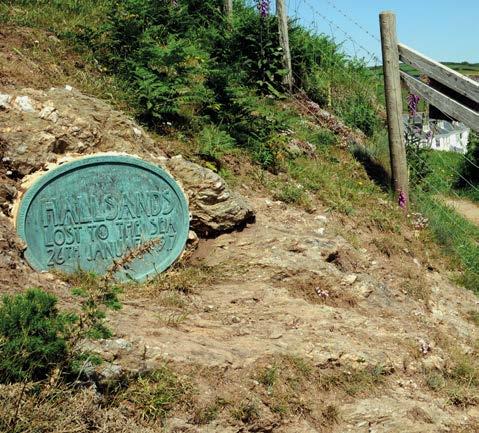
Nature, as of human venality and folly. In the 1890s, the Admiralty had decreed that the naval dockyard at Keyham should be expanded, and Sir John Jackson’s company was contracted to dredge the shingle bank that had protected Hallsands. By the time the dredging licence was revoked in 1902, half a million tons of shingle had been taken, part of the sea wall had been washed away, and Hallsands’ houses damaged. A year later, John Masefield, a future Poet Laureate, warned that the settlement was “imminently threatened by the sea… The fishermen are in danger of utter ruin, and the first gale from the south-east is likely to sweep the village from sight.”
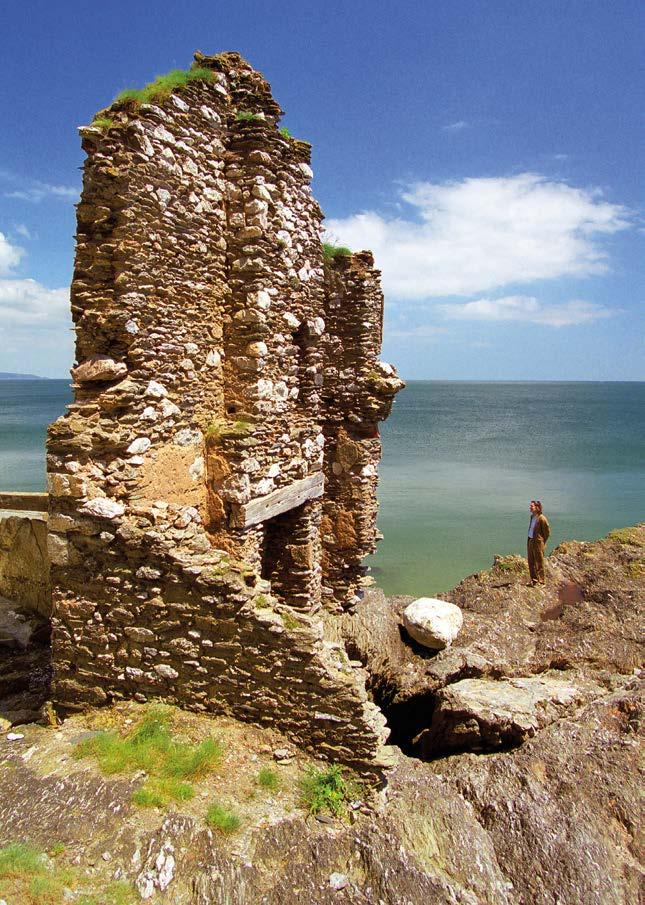
And so it came to pass, with, miraculously, no loss of life, and the homeless villagers embarked upon a seven-year battle for compensation. A single house was left habitable, and here Elizabeth Pettyjohn lived, alone with her cat and chickens, until her death in 1964, aged 80. From a viewing platform you can look down on the atmospheric remains and read on a plaque, words penned by Masefield: But that its wretched ruins then, Though sunken utterly Will show how the brute greed of men Helps feed the greedy sea
PLAN AHEAD
● Witley Court, in the care of English Heritage, is open all year (weekends only in winter). www.english-heritage.org.uk
● Appuldurcombe House is open from Friday to Sunday, April until October. www.english-heritage.org.uk
● Imber is accessible for only a few days each year. A convoy of London Route Master buses make the trip on one day each August. imberbus.org
● Tyneham village is open most weekends and public holidays. tynehamopc.org.uk

BRITAIN 39www.britain-magazine.com heritage PHOTOS © SHUTTERSTOCK/STEVE MCCARTHY/GARY PERKIN/ANDREW HARKER/BRIAN HARTSHORN/MARC HILL/ALAMY




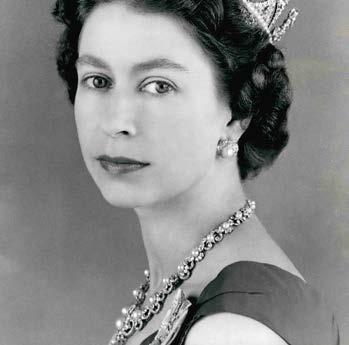


























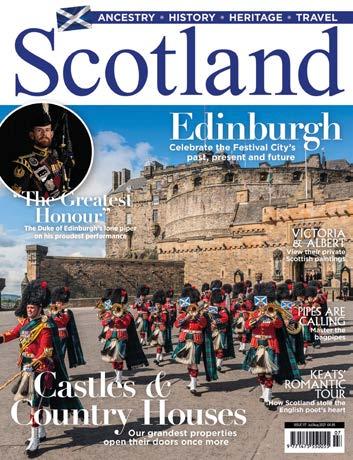



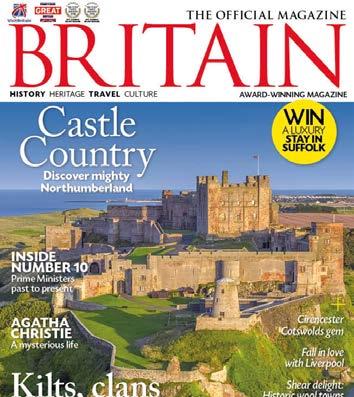
































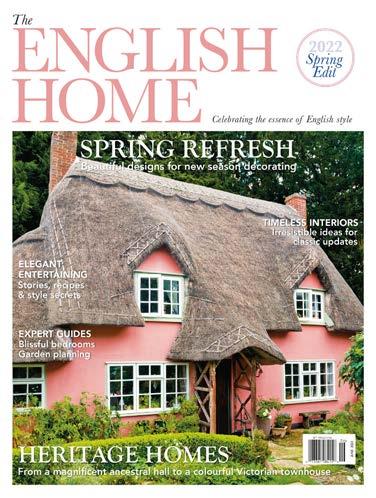
The Queen’s JUBILEE Celebrating Her Majesty’s remarkable reign HISTORY • HERITAGE • TRAVEL WORTH £5,000 WIN A Great British Holiday Downton Abbey Meet the real-life household of Highclere QUEEN’S PLATINUM JUBILEE THE NATION CELEBRATES A magical mystery tour 25 YEARS OF HARRY POTTER Order a subscription today A subscription makes the perfect gift for friends and family Order by phone US & Canada The English Home 866-926-0260 BRITAIN 888-321-6378 The English Garden 800-998-0807 Discover Britain 866-926-0261 Scotland 800-925-8215 $7.99 MAY 2022 100 PAGES OF GLORIOUS BRITISH GARDENS & PLANTING IDEAS GARDEN englishTHE For everyone who loves beautiful gardens Sophie Conran’s Wiltshire garden Stylish alliums for spring and summer Spring’s brightest bulbs put on a show Time for TULIPS Creative ways to preserve your flowers Order online at www.chelseamagazines.com/fivetitles Order by phone UK & RoW +44 (0)1858 438 854 Discover Britain The perfect way to explore the British Isles The English Garden For everyone who loves beautiful gardens The English Home Celebrating the essence of English style BRITAIN The official magazine of VisitBritain Scotland The world’s leading Scottish interest magazine
Rhymes

The role of Poet Laureate – the official writer of verses for kings and queens – was first awarded four centuries ago, but how has it evolved?
BRITAIN 41www.britain-magazine.com PHOTOS: © PRISMA BY DUKAS PRESSEAGENTUR GMBH/ALAMY
WORDS NEIL JONES
Royal
Five days after the death of Queen Elizabeth II, a poem entitled Floral Tribute, reflecting on her life of service through the metaphor of her favourite flower, the lily of the valley, was published in her honour. It was the work of Simon Armitage, who as Britain’s Poet Laureate was following in a long line of tradition. Poets Laureate have waxed lyrical about royal events from birthdays and jubilees to weddings and funerals for centuries. Yet their role has also much changed through time.
The title Poet Laureate echoes the Greek/Roman tradition of honouring achievement with a crown of laurel, a tree sacred to Apollo, patron of poets. The acerbically funny actor-playwright Ben Jonson – born 450 years ago this year – was an early appointee when King James I, enamoured with the courtly masques Jonson penned, rewarded him with a pension in 1616, augmented in 1630 by King Charles I with an annual “butt [126 gallons] of Canary wine”.
The appointment of John Dryden as Poet Laureate in 1668 established the post as a royal office to be held for life and to be filled automatically when it became vacant. A master of the classical style, Dryden had deftly navigated volatile times, whether writing Heroic Stanzas (1659) on the death of Cromwell, or welcoming back Charles II at the Restoration with Astraea Redux (1660) and gilding the royal image in Annus Mirabilis 1666 . Duly rewarded with £100 a year and the requisite butt of wine, Dryden further endeared himself to Charles while Poet Laureate with satirical attacks against royal enemies.
When Dryden embraced Roman Catholicism just as Catholic James II became king, critics accused the poet of political opportunism. But his refusal to swear an oath of allegiance when Protestant William and Mary came to Rewarded with £100 a year and a butt of wine, Dryden endeared himself to Charles II with attacks against royal enemies


42 BRITAIN www.britain-magazine.com PHOTOS: © STEVEN WYNN/IANDAGNALL COMPUTING/HISTORICAL PICTURE ARCHIVE/ALAMY/HULTON ARCHIVE/GETTY
Previous page: Poet's Corner at Westminster Abbey Left to right: John Dryden became Poet Laureate in 1668; King Charles II; Queen Caroline of Brunswick; Henry Pye's appointment was likely a reward for political favours
the throne in 1689 showed his convictions were genuine – and got him the sack from the laureateship; the only poet (so far!) to be stripped of office.


Dryden’s friend-turned-foe Thomas Shadwell succeeded to the Laureate’s post and began the custom of writing an ode to mark the New Year, as well as odes (often sung) for the sovereign’s birthday, though his efforts proved somewhat lacklustre.
Shadwell’s successor, Nahum Tate, is celebrated today for having penned the popular carol While shepherds watched their flocks by night, but his Laureate poetry, tending to sycophancy, is long forgotten. Writing for George I’s birthday in 1715, he extravagantly declared: “When Kings, that make the publick good their care, / Advance in dignity and state, / Their rise no envy can create…” The Jacobites raised their standard of revolt just a few months later.

Henry Pye effused over the marriage of the Prince of Wales and Caroline of Brunswick, though they detested each other
BRITAIN 43www.britain-magazine.com history PHOTOS:
Cash-strapped country gent Henry Pye, a one-time MP and supporter of Prime Minister William Pitt, became ninth Poet Laureate in line from Dryden and got the traditional allowance of wine replaced by a payment of £27 a year. He effused over “the smiles of wedded love” when the Prince of Wales (later George IV) married

Princess Caroline of Brunswick, though in reality the royal couple detested each other. Appointments to uphold the political establishment and second-rate verses aimed at burnishing royal images were diminishing the prestige of the Laureate’s role.
Titan of the literary world Sir Walter Scott, unwilling to write to order, wisely declined an invitation to become the next Poet Laureate, yet as the 19th century dawned, a series of poets stepped up who would restore lustre to the office.
Proposed by Scott, Robert Southey accepted the laureateship in 1813 and was glad of the income (he was caricatured by a contemporary as Mr Feathernest). An erstwhile radical, he ignored jibes that the post meant

Lakeland Poet William Wordsworth took up the post only when assured he would not be obliged to write official poetry
44 BRITAIN www.britain-magazine.com history
he had sold out to the Establishment, remained ensconced at Keswick in the Lake District and quietly avoided writing royal birthday and New Year odes – the ‘curse’ of so many previous poetic Muses.
Southey focused instead on poems for public occasions or on major events, including the Battle of Waterloo (1815) which prompted The Poet’s Pilgrimage to Waterloo: “a little lowly place, / Obscure till now, when it hath risen to fame, / And given the victory its English name.”

Following Southey, who held the laureateship for 30 years, revered Lakeland Romantic poet William Wordsworth, now nearly 73, would take up his late friend’s post only when Prime Minister Robert Peel
Clockwise from bottom left: William Wordsworth became Poet Laureate at the age of 73; Wordsworth was inspired by the landscapes of the Lake District; Tennyson's poem on the death of the Duke of Wellington is one of his most famous; Alfred, Lord Tennyson

assured him he would not be obliged to write any official poetry – which, uniquely, he didn’t.
Most of all, the quintessential Victorian, Alfred, Lord Tennyson raised the status of the laureateship. The son of a Lincolnshire vicar (you can follow a trail around his childhood haunts), he was appointed to the role in 1850, the same year that he was married and his most enduring work, the elegiac In Memoriam A.H.H. to his friend Arthur Hallam, was published.
Increased fame as Poet Laureate meant Tennyson found his privacy constantly invaded on the Isle of Wight where he had settled (you can follow in his steps on a literary trail here, too), but his work continued to pour forth: from The Charge of the Light Brigade inspired by bravery and disaster at Balaclava in the Crimean War, to On the Jubilee of Queen Victoria. His magnificent Ode on the Death of the Duke of Wellington segues into poignant humility in its final lines: “Speak no more of his renown, / Lay your earthly fancies down, / And in the vast cathedral leave him. / God accept him, Christ receive him.”
After Tennyson’s death in 1892, the office of Poet Laureate was left vacant for several years while it was

Increased fame as Poet Laureate meant Tennyson found his privacy constantly invaded, but his work continued to pour forth
BRITAIN 45www.britain-magazine.com history
PHOTOS: © TRAVELER1116/ISTOCK/ALEX WEST/HENRY GUTTMANN COLLECTION/GETTY/SHUTTERSTOCK/EVENT HISTORICAL

46 BRITAIN www.britain-magazine.com history
pondered who could be a worthy successor. Among those who followed, seven were incumbents during the reign of Queen Elizabeth II, from John Masefield (of Sea-Fever fame) to Simon Armitage, 21st in line from Dryden. The accessible, wry style of the much-loved Sir John Betjeman (Poet Laureate from 1972) ensured his poetry reached a wide audience, while “royal witch doctor” Ted Hughes (from 1984) baffled and provoked with nature-infused outpourings like Rain-Charm for the Duchy celebrating the occasion of Prince Harry’s christening.
Today the office of Poet Laureate is an honorary position offered to a poet of national significance. There is no requirement to write about royal events, although many incumbents do. The appointment is approved by the monarch acting on the advice of His Majesty’s Government, and since Andrew Motion (1999) the post is for a ten-year tenure. From 1984 the Laureate’s ‘butt of Canary wine’ has been reinstated in the modern form of 720 bottles of sherry per tenure: a goodwill gift from the Sherry Producers of Spain.
Recent Laureates have reinvigorated their role by writing about contemporary issues such as homelessness, while Dame Carol Ann Duffy – the first female
Left to right: Tennyson Down on the Isle of Wight was named after the poet, who lived on the island for nearly 40 years; Queen Elizabeth II presented Simon Armitage with The Queen's Gold Medal for Poetry upon his appointment as Poet Laureate
incumbent – wrote about the 2009 parliamentary expenses scandal in Politics. West Yorkshire-based Armitage captured the experience, shared by many, of being separated from a loved one in hospital during the pandemic in his poignant The Song Thrush and the Mountain Ash (2020).
Modern Laureates have also used their role to promote poetry on the public stage. Armitage donates his Laureate’s Honorarium of £5,000 each year to support his Laurel Prize for the best collection of eco or nature poetry.
Alongside this broadening of scope of course there still remains a strong need for works like Armitage’s poem Floral Tribute, to draw the country together in commemoration of royal occasions and national life: “The country loaded its whole self into your slender hands, Hands that can rest, now, relieved of a century’s weight.”

Today the office of Poet Laureate is an honorary position offered to a poet of national significance, approved by the monarch
BRITAIN 47www.britain-magazine.com history
PHOTOS: © NATIONAL TRUST IMAGES/JOE CORNISH/PA IMAGES/ALAMY


www.britain-magazine.com48 BRITAIN

48 BRITAIN www.britain-magazine.com PHOTOS: © HOLKHAM ESTATEThere’s nowhere better to soak up the atmosphere of Yuletides past than in a stately home decorated for Christmas WORDS SANDRA LAWRENCE Deck the halls

50 BRITAIN www.britain-magazine.com
That festive scene in every historical drama: our hero and heroine enjoying Christmas celebrations at the Big House: feasting, dancing, a sparkling tree, presents for everyone and Blind-Man’s Bluff. How true is the fantasy? As with anything historical, it depends. Christmas has swung in and out of fashion with the British gentry, but regular folk have never forgotten how to celebrate.
The winter solstice (21 December) was important enough for ancient people to align great monuments like Stonehenge with the sunset. The Romans celebrated Saturn, god of agriculture and plenty, at the raucous winter festival of Saturnalia, and feasting gave country people an excuse to eat the meat of any animals that would not survive a long winter. There was little work to do in frozen fields so labourers could take a well-earned rest and let off steam with games and merrymaking.
The early Church did not want such pagan-influenced traditions to continue but knowing there would be riots if they stopped the fun, turned the celebrations towards Christianity, designating a midwinter ‘Christ Mass’ to mark the birth of Christ. It was mainly a religious affair, but workers needed rest after the long harvest, so Christmas became a twelve-day festival, ending with boisterous fun and games on Twelfth Night. Medieval halls hung evergreen decorations and ‘kissing boughs’ of greenery, fruits and, later, mistletoe, quietly forgetting any pagan roots.
Henry VIII was a huge fan of Christmas, dancing, feasting, and decorating his castles for the full twelve days. His daughter Elizabeth celebrated no less joyfully and the great Tudor houses of England followed her lead, inviting travelling players, musicians and storytellers to entertain their guests.
Previous page, left to right: Holkham's Marble Hall, decked out in spectacular fashion; Holkham Hall runs festive tours at Christmas
This page, left to right: Powis Castle will be celebrating its Tudor past this Christmas; Packwood House in Warwickshire


BRITAIN 51www.britain-magazine.com stately homes
PHOTOS © NATIONAL TRUST IMAGES/PAUL HARRIS/ANDREAS VON EINSIEDEL
For more stories of stately homes, see www.britainmagazine.com
Left to right: Powis Castle's Long Gallery was once a place for Tudor ladies to promenade; the Morning Room at Standen House decorated for this year's 1930 theme; Chatsworth House decked out for Christmas
Packwood House in Warwickshire will be delving into its Elizabethan past for this year’s decorations. Each room will be decorated differently, down the ages to the present day.



In the 1930s, Packwood’s last owner, Graham Baron Ash, started celebrating ‘Tudor’ Christmas again. The family visitor’s book proves that Packwood was ‘Open House’ at Christmastime, and Ash even burned a traditional Yule Log in his ‘Great Hall’, created from a derelict barn.

Christmas suffered a severe setback during the Commonwealth (1649-1660), following the execution of Charles I, when Puritan laws forbade any kind of fun. It would take a couple of hundred years for the festival to recover. At Dyrham Park near Bristol, the focus of celebrations are on the wedding of William Blathwayt and Mary Wynter that took place after the Restoration of Charles II, at Christmas 1686. The house will be decorated with evergreens to recall both celebrations.
Christmas Day still very much focused on church services, though the end of the twelve-day period saw an opportunity for estate owners to hold parties for their tenants. They presented ‘Christmas boxes’ (tips) to apprentices, servants, tradesmen and the poor. The gentry themselves, however, found Christmas rather ‘common’ and celebrated less, preferring small parties for friends, recitals, a little carol singing, card games and home theatricals. Dyrham will be recognising this difference by decorating the kitchens with wreaths and greenery, as though preparing for the estate feast, while in the newly redecorated Great Hall, there will be a selection of 17th-century harpsichord music.
In the 18th century, as labourers increasingly moved
from the countryside to the cities, there was less time to celebrate. Factories did not shut down and there was no longer a natural period of rest before Plough Monday, the traditional start of the agricultural year following Epiphany. Twelfth Night diminished, surviving mainly through the spiced ‘Twelfth Cake’. This tasty treat, the spectacle of many a baker’s shop window, has come down to us in much-reduced form as Christmas cake.
At Powis Castle in Wales, the family did not go in for Christmas. Eleven-year-old Charlotte, daughter of Lady Henrietta Herbert and Edward Clive, does not mention Christmas once in her diary. The only time she records anything on 25 December, the entry merely reads “Colonel Close and a party dined with us.” Sugar plums were certainly not dancing in her head.

Everything changed in the 19th century. Whether through Charles Dickens, Prince Albert or just a general change of mood, the Victorians became obsessed with Christmas. ‘Ancient’ traditions were re-adopted and reinvented. Medieval ‘plum porridge’ became Christmas pudding. Mince pies morphed from meat with a little dried fruit and sugar to the exact opposite. The only ‘minced meat’ that survives in today’s pies is suet.
By the 1890s Christmas was in full swing and George, 4th Earl of Powis, spent every Christmas at the Castle. He started a new Powis tradition: a Christmas Day shooting party which, of course, meant that everyone on the estate now had to work on Christmas Day. At least they got to decorate a large Christmas tree in the castle courtyard, a tradition continued to modern times. On Boxing Day,
Whether through Dickens, Prince Albert or just a general change of mood, the Victorians became obsessed with Christmas
52 BRITAIN www.britain-magazine.com stately homes
PHOTOS: © NATIONAL TRUST IMAGES/PAUL HARRIS/CHRIS LACEY/LAURENCE PERRY/DPC PHOTOGRAPHY

estate workers and their families were invited to the castle to see the tree, and the Earl presented the children with gifts. The staff had to wait until New Year’s Day, however, for their party in the Servants’ Hall. Servants’ gifts were generally small – children might expect an orange or a small toy, while servants might receive a dress length, woollen jumper, piece of meat or an umbrella. Sometimes such presents were randomised into a ‘lucky dip’ tub filled with bran beside the twinkling tree.
One of the best times to have been staff at Christmastime
THE BEST DISPLAYS OF CHRISTMAS PAST
seems to have been the 1930s, despite what was, for many, the beginning of the end for the grand country house lifestyle. Estate children at Powis were invited to the castle for a tea party, hosted by Mervyn, Viscount Clive. Gathered in the ballroom, they waited excitedly for Father Christmas to arrive with a giant cracker on a sledge.
This year, Standen House in West Sussex will be celebrating a 1930s Christmas as celebrated by the Beale family. Built in 1894, the house remained in the same family until it was passed to the National Trust in 1972, and there are many first-hand accounts of the people who lived or worked there. The Trust even has the original present lists made by Mrs Beale for her children and servants. Standen’s festive decorations are based on specific memories, including the story of Mr Beale (the grandfather) dressing as Father Christmas and ‘coming down’ the chimney. The children, herded in the hall, listened with mounting excitement to a dreadful clattering coming from the fireplace next door. “We rushed in and there he was just as expected standing by the big Christmas tree, and gruffly presenting each one with splendid presents,” remembered one overawed child many years later. The suit ‘Grandfather’ Christmas wore that magical day will be on display.
Standen is lucky in that it has documentary evidence of Christmases past. Most old houses do not come with such riches. At 17th-century Ham House, Richmond, there is no specific reference to what must have been many Christmas celebrations. Sticking rigidly to 17th-century decorations would mean missing out many features modern visitors would miss – not least our adored Christmas trees, which were only popularised in Victorian times – and Ham have chosen to create a more general festive feel. This allows both swags of traditional foliage in the house and a selection of sugar treats that would have formed the classic Twelfth Night celebrations. After all, these houses have seen all these joyful traditions – and more – across many centuries, and modern celebrations are as important as any that may have gone beforehand.
Powis Castle, Wales The castle’s Long Gallery, decked out in greenery and scented with dried oranges and cinnamon, will revisit its Tudor past as a turnabout promenade for ladies. www.nationaltrust.org.uk
Chatsworth House, Derbyshire This year, Chatsworth is celebrating a Nordic Christmas, with pieces from the Devonshire collections woven into the displays. www.chatsworth.org Chastleton, Oxfordshire The house will be dressed for a 1960s country Christmas, a reminder of the parties hosted by one-time owners the Clutton-Brocks. www.nationaltrust.org.uk Holkham Hall, Norfolk The columns of 18thcentury Holkham’s Marble Hall are wrapped in fairy lights, while Christmas trees line the
staircase and giant baubles dangle from the ceiling. Christmas candlelit tours of the house are magical. www.holkham.co.uk

Moseley Old Hall, Staffordshire The year is 1652 and Oliver Cromwell has banned Christ mas, but Moseley is celebrating regardless, with board games in the Parlour and 17th-century sweet treats to taste too. www.nationaltrust.org.uk
Belvoir Castle, Leicestershire This grand Regency castle will be kitted out with Regencystyle decorations, its state rooms adorned with festive lights. www.belvoircastle.com
The Vyne, Hampshire Transformed for a Victorian Christmas, The Vyne’s rooms will be filled with decorations and Christmas trees dripping with beads, candles, cornucopias and cherubs. www.nationaltrust.org.uk
 Top to bottom: The Great Hall at Ham House in Richmond; visitors to Holkham Hall this Christmas will be treated to festive scenes in the Old Kitchen
Top to bottom: The Great Hall at Ham House in Richmond; visitors to Holkham Hall this Christmas will be treated to festive scenes in the Old Kitchen
The children, herded in the hall, listened with excitement to a clattering from the fireplace
54 BRITAIN www.britain-magazine.com stately homes
PHOTOS: © NATIONAL TRUST IMAGES/CHRIS DAVIES/HOLKHAM ESTATE





















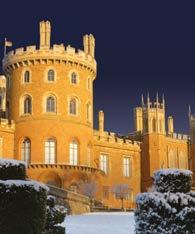










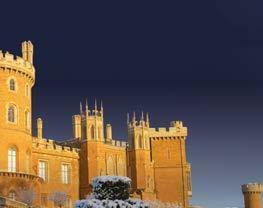










www.britain-magazine.com BRITAIN 55 Experience you can Trust For vacations and tours to Britain The Lake District The English Cotswold Four Corners of Cornwall English Mansions and Castles The English Channel Isles Isle of Wight and the Isles of Scilly Call Barry Devo on 330 284 4709 (EDT) Canton OH or email barrydevo@prepcotravel.com www.prepcotravel.com © EINAR REYNIS-UNSPLASH KM-2022-0433 - BC - Xmas Ad resizing - Design V1.0 (Outlined).indd 10 12/08/2022 14:39
































BRITAIN www.britain-magazine.com The grand state funeral for Britain’s longest-serving monarch drew on royal traditions and ceremonies that date back centuries WORDS ROSE SHEPHERD Pageantry MAJESTY &












www.britain-magazine.com

58 BRITAIN www.britain-magazine.com history
“
History is now and in England”, wrote T.S. Eliot in ‘Little Gidding’, last of his Four Quartets. And who could not have felt it, watching the funeral of Queen Elizabeth II in the hallowed 12th-century space of Westminster Abbey? The pomp, the pageantry, the livery and plumes, the heroic, scarlet-clad Grenadier pallbearers, the heralds and pursuivants, the trumpets, the lone bagpiper’s lament…
For ninety-six minutes, on the minute, in the Elizabeth Tower, the tenor bell had tolled. Ninety-eight Royal Navy Ratings of the Sovereign’s Guard had pulled the gun carriage bearing the lead-lined coffin; 40 came behind. They were flanked by service equerries, members of the King’s Body Guards of the Honourable Corps of Gentlemen at Arms, the Yeomen of the Guard and Royal Company of Archers.
Behind walked Charles III and the Royal Family, while ahead went 200 pipers and drummers from Scottish and Irish regiments, the Gurkhas and Royal Air Force.

Nothing so connects us to our past as the monarchy. Dynasties have come and gone. The Houses of Denmark, Normandy, Blois, the Angevins, Plantagenets, Tudors, Stuarts, Netherlanders, Hanoverians, Sax-Coburg-Gotas, in a dazzling succession broken only by Oliver Cromwell’s dreary interregnum.
State funerals are part of a centuries-long tradition, deriving from heraldic royal funerals, deeply emotive, charged with symbolism, changing with the times. Many of those who lined the Mall had never witnessed a state funeral; very few remember four.
St George’s Chapel, Windsor, where the late Queen now lies with her ‘strength and stay’, Prince Philip, hosted the state funerals of George V and VI, in 1936 and 1952. On 30 January 1965, Sir Winston Churchill’s state funeral was conducted at St Paul’s Cathedral. Normally the preserve of the sovereign, state funerals have been granted to such rare, towering figures as Sir Isaac Newton, Horatio Nelson and Arthur Wellesley, Duke of Wellington.
Some 300,000 people came to pay their respects as Sir Winston lay in state in stupendous Westminster Hall, Parliament’s oldest edifice. Built in 1097, in the reign of William Rufus, it has been the scene of feasts and jousts and coronation banquets, and of the fateful trials of William Wallace, Sir Thomas More and Charles I.
The funerals of Diana, Princess of Wales in 1997, and of Queen Elizabeth, the Queen Mother in 2002, though held in Westminster Abbey with the full panoply of state, were ‘ceremonial’. Prince Philip, wanting none of the ‘fuss’, declined the razzmatazz for his funeral in 2021, at St George’s, with a green Land Rover ‘hearse’, modified to his own specification.
A place of worship and celebration, of coronations and royal weddings, Westminster Abbey is, too, a royal mausoleum, “a frozen requiem, with a nation’s prayer ever in dumb music ascending”, as American author Mary Elizabeth Wilson Sherwood expressed it. The sombre roll call of royalty buried here includes former reigning monarchs, among them Edward the Confessor, Edward I,
Previous page: The Queen’s funeral cortège makes its way along The Mall during the Lying-in-State procession on 14 September 2022 Clockwise from left: 98 Royal Navy sailors pulled the gun carriage carrying the Queen's coffin after her funeral; Sir Winston Churchill's funeral procession on 30 January 1965; King Charles III followed behind his mother's coffin with his siblings and sons

Henry III, Richard II, Henry V, James I, Charles II, Mary II, Queen Anne, George II, and numerous consorts, dukes, princes, princesses. Inimical in life, united in death, the Catholic Mary I shares a tomb with her half-sister, the Protestant Elizabeth I; their halfbrother, the boy king Edward VI, is interred before the altar. Among effigies displayed are those of Edward III, his face a death mask; Mary I, Elizabeth I, James I, Charles II, and a seated Queen Anne. Time, like an ever-rolling stream, bears all its sons away.
Royal funerals of the 16th and early 17th centuries were elaborate affairs, reaching their apogee in 1625 with James VI and I, whose body lay in state in Denmark House (now Somerset House). Chief mourner Charles I accompanied a hearse designed by Inigo Jones to the Abbey, where the Bishop of Lincoln gave a two-hour sermon.
After the Civil War, royal funerals became more low-key and private. The exception was that of Mary II, who died of smallpox in 1694, and lay in state in Banqueting House in Whitehall, before a ceremony in the Abbey with music composed by Henry Purcell. Both Houses of Parliament
State funerals are part of a centurieslong tradition, deriving from heraldic royal funerals, deeply emotive and charged with symbolism
BRITAIN 59www.britain-magazine.com
PHOTOS: © 2022 GETTY IMAGES/LEON NEAL/NARIMAN EL-MOFTY/THE PRINT COLLECTOR/SOPA IMAGES LIMITED/ALAMY

60 BRITAIN www.britain-magazine.com history
attended; Mary’s inconsolable husband, William III, did not. Their wax effigies are displayed in the Queen’s Diamond Jubilee Galleries high above the abbey floor, a crown between them signifying their joint monarchy.
Responsibility for state funerals falls to the Earl Marshall, a hereditary position held by the Dukes of Norfolk, descendants of Edward I, who, since the 16th century, have had authority over the kings of arms, heralds and pursuivants at the College of Arms. However, monarchs themselves make their own plans.
In accordance with Queen Victoria’s wish to be buried with full military honours “like a soldier’s daughter” for her funeral on 2 February 1901, her white coffin was carried on a gun carriage. She was clothed in a white dress and her wedding veil, and in the coffin with her were laid a dressing gown belonging to the late Prince Albert, a plaster cast of his hand, and a lock of hair from John Brown, former ghillie, Victoria’s friend and confidant.
Proceedings descended into farce when the eight white horses from the Royal Horse Artillery, who were to draw the carriage, panicked and broke their traces. Captain Prince Louis of Battenberg, Prince Philip’s future grandfather, saved the day, offering the Royal Navy, who were lining the route, to pull the carriage to St George’s Chapel, and so a tradition was born. As Victoria was buried at the Royal Mausoleum at Frogmore, beside Prince Albert, her dreams of an all-white funeral were fulfilled, as, outside, the sleet turned to snow.
The custom of the sovereign lying in state in Westminster Hall was instituted for Edward VII in 1910. Thousands queued in the rain to see him (“They’re givin’ ’im back to us!” a young woman cried), and over three days a half a million people passed through. For the cortège, on Friday 20 May, a Highland soldier walked behind the coffin, while in front trotted the king’s devoted fox terrier, Caesar (nicknamed ‘Stinky’), ahead of the largest ever gathering of European royalty, to the ire of Kaiser Wilhelm II.

The advances in broadcast media allowed for wider public involvement in the funeral of George V, while George VI’s funeral procession was the first to be televised.
Elizabeth II ordained that her funeral be held in Westminster Abbey, where she married and was crowned, instead of the far smaller St George’s Chapel. The late Queen’s funeral was the first of any British monarch to be televised, and the live streaming of these events was watched by 4.1 billion people of the world’s 7.9 billion population.
The late Queen is said to have been involved in every aspect of the planning. As well as the pomp and pageantry to be expected at a state funeral, there were also some deeply affecting personal moments. Next to the Crown Jewels on the Queen’s coffin lay a wreath of flowers including rosemary, for remembrance, and myrtle cut from a plant which was grown from the Queen’s wedding bouquet. Many of the pieces of music chosen were first heard at her wedding and coronation. And as a deeply affecting personal touch, at Windsor her two corgis, Sandy and Muick, and favourite horse, Emma, awaited her return for a last goodbye.


Clockwise from left: The Queen's coffin is carried into St George's Chapel; Queen Victoria's funeral procession; the Queen's corgis had a part in her funeral procession; Emma, the Queen's fell pony, stood by as her hearse drove past; a note on the Queen's coffin reads 'In loving and devoted memory. Charles R.'

As Victoria was buried, her dreams of an all-white funeral were fulfilled as, outside, sleet turned to snow
BRITAIN 61www.britain-magazine.com history PHOTOS: © THE PRINT COLLECTOR/PA IMAGES/ALAMY

SANDWICH
Home to what is thought to be the longest unbroken stretch of timber-framed properties in England, the small medieval town of Sandwich in Kent attracts visitors from all over the world.

The town’s connection with the food item has undoubtedly given the town a fair amount of fame. It was supposedly invented by John Montagu, 4th Earl of Sandwich, in around 1762. As the story goes, not wanting to interrupt his gambling for a meal, the Earl ordered his valet to bring him a snack of meat between two slices of bread – and the rest is history. But the town has a fascinating story of its own that dates back much further than the 4th Earl.
Sitting evocatively amongst the atmospheric Kent marshes, just up the river from the town, lie the remains of the Roman fort of Richborough, the landing
WORDS HENRIETTA EASTON
place of the Roman invasion of Britain in AD 43 and perhaps the most symbolically important of all Roman sites in the country, witnessing both the beginning and the end of Roman rule here.
Once a large, bustling settlement, visitors can now admire the fort’s mighty walls and surviving foundations, explore
the Roman amphitheatre, and take a closer look at the hundreds of curious Roman artefacts uncovered during the site’s excavation. The fort, in the care of English Heritage, is at the end of an extensive restoration project and is due to reopen in 2023 with a brand-new revamped visitor experience. The Sandwich Riverbus runs daily boat trips to Richborough Roman Fort from the town.
Although it now lies two miles from the sea, Sandwich was once a major port. An important place of trade and production right up until the end of the Roman occupation, it was later a stop-off for medieval pilgrims on their way to Canterbury and travellers to London. It was one of the Cinque Ports: a medieval confederation of English Channel ports created to provide ships and men for the king’s service.
Above: Sandwich is famous for its assortment of medieval and historic architecture Next page, from left: Richborough Roman Fort; a rare Deptford Pink flower at Pegwell Bay Nature Reserve; the Quay
One of Britain’s best-preserved medieval settlements, this pretty Kent town has a fascinating history
BRITAIN 63www.britain-magazine.com
PHOTO: © PEARLBUCKNALL/ALAMY weekender
Sandwich has also been the site of some pivotal moments in British history. In 1194, King Richard the Lionheart landed here on his return to England from the Third Crusade. Less than 20 years later, Prince Louis of France invaded here during a great sea-battle known as the Battle of Sandwich, in support of the English barons against the unpopular King John.
The French invaded again in 1457, sending a raiding party of 4,000 men to Kent. Sandwich was pillaged, with much of the town burned to the ground and the mayor, John Drury, murdered. Ever since, according to tradition the Mayor of Sandwich has worn a black robe in mourning for this ignoble deed.
A picture-perfect hodgepodge of medieval, Tudor and Georgian buildings tell the town’s fascinating story. The impressive Fisher Gate on the Quay dates back to 1384 and is the only one of the original medieval town gates to survive the fire. The nearby Barbican, with its distinctive chequered facade, is worth a look too. Dating from the 15th century and standing at the end of the bridge over the River Stour, it was once used as a tollhouse.
Those clued up on their Flemish architecture may also notice a smattering of distinctive curly Dutch gables. In 1561,
Elizabeth I granted Flemish settlers the right to settle in Sandwich, and they brought with them many skills in architecture and market gardening. In fact, in the late 16th century Sandwich was the only town in England that housed more so-called ‘strangers’ than Englishmen.
For more on the town’s rich history, the Sandwich Guildhall Museum is well worth a visit, housing Roman relics, ancient coins and an original copy of the Magna Carta, found in 2015. It is thought that this medieval document could have inspired the young political activist Thomas Paine, who lived in Sandwich in 1759 and became one of the most influential writers during the American Revolution.
As for Kent’s superb natural offerings, Pegwell Bay Nature Reserve is just a short drive away, or about an hour’s walk along the Kent Coast Path. As well as a beautiful beach to explore, the reserve is known for its migrating waders and wildfowl.

Whether or not the tale of the Earl of Sandwich’s sandwich is really true, visitors to this pretty and historic town will surely agree on one thing: it’s the best thing since sliced bread.
For more on what to see and do in the historic county of Kent, see www.britain-magazine.com


TRAVEL ESSENTIALS
GETTING THERE
Trains from London to Sandwich take around 1hr 45min and leave from Blackfriars, Victoria, London Bridge and St Pancras stations. www.thetrainline.com
WHERE TO STAY
The Bell Hotel dates to Tudor times and still retains many of its original features, with plenty of modern luxuries. With an enviable location on the Quay overlooking the River Stour, the hotel boasts an outdoor terrace which provides the perfect spot for a drink after a day exploring. www.bellhotelsandwich.co.uk
WHERE TO EAT AND DRINK
Having been a ‘dwelling house’ since 1491 and a pub since the 18th century, the Crispin Inn embodies Sandwich’s medieval history and serves traditional pub fare made using local ingredients, in a cosy setting. For something more contemporary, The Toll Bridge on the riverside serves fresh and delicious seafood and regularly hosts music evenings. thecrispin-sandwich.co.uk; thetollbridge.co.uk
FURTHER INFORMATION
www.visitkent.co.uk
64 BRITAIN www.britain-magazine.com weekender
PHOTOS: © WWW.JIMHOLDEN.CO.UK/NATIONAL TRUST IMAGES/RICHARD ALLEN/DAVID ASKHAM/ALAMY

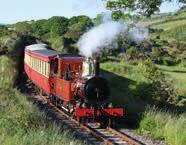
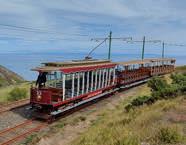


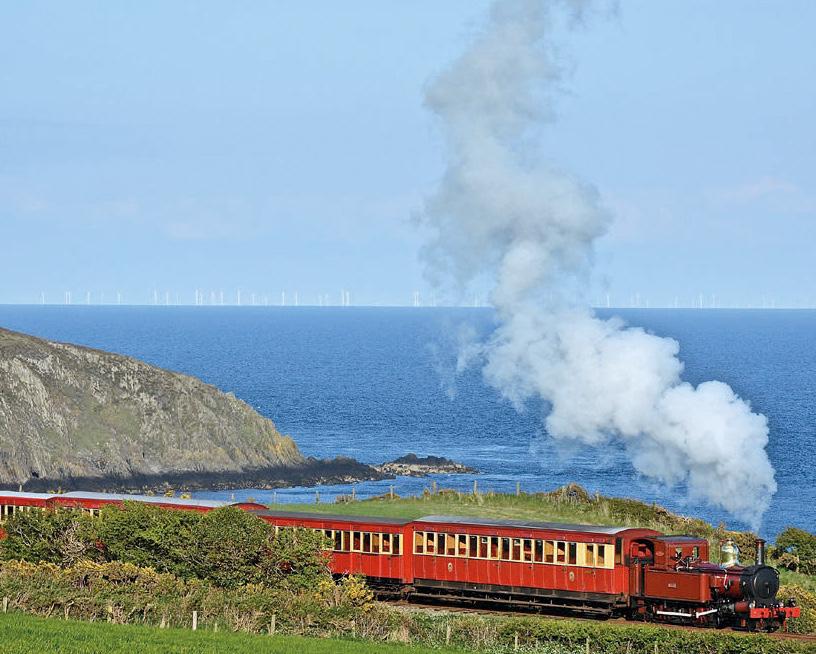




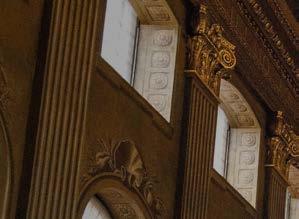
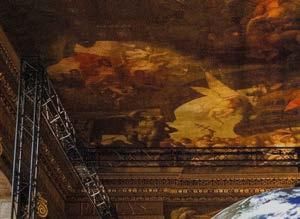








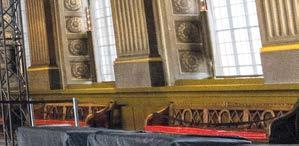












www.britain-magazine.com BRITAIN 65 visitbritain.com © VisitBritain/Sarah Smith See the whole world in one place at the Old Royal Naval College, London P0363338_WTASOB_Magazine_Sept_22.indd 1 14/09/2022 17:23 Belvoir Castle, Leicestershire, NG32 1PE • REGENCY CASTLE • • FORMAL GARDENS • WOODLAND WALKS• • AFTERNOON TEA • EVENTS • • ENGINE YARD SHOPPING VILLAGE • • CAFE & GIN BAR • BRAND NEW ADVENTURE PLAYGROUND @belvoircastle | www.belvoircastle.com Email groups@belvoircastle.com for exclusive discounts
The timeless Test Valley, criss-crossed with chalk rivers and dotted with quaint villages, sits in a landscape that’s long been revered for its pastoral beauty











WORDS BRENDAN SAINSBURY THE TESTPassing

Chalk rivers, their clear, sparkling waters gliding over flinty gravel beds, are extremely rare. There are barely 200 of them worldwide, the lion’s share in southern and eastern England. Characterised by flower-filled water meadows, elegant weeping willows and gin-clear channels crowded with darting trout and grayling, their pastoral surroundings are as distinctly English as cricket and cream teas.
Hampshire’s River Test is arguably Britain’s finest chalk river, and the valley through which it flows stretches from the chalk uplands of the Hampshire Downs to Southampton Water on the cusp of the English Channel.
Within its watershed lies a patchwork of landscapes replete with the quintessential motifs of rural Hampshire: thatched cottages, flint-stone churches, curiously named pubs, and somnolent villages whose population counts haven’t changed much in a thousand years.

While the region’s narrow lanes are navigable by car, the main villages are conveniently linked by a long-distance footpath, the Test Way, which parallels the eponymous river from Longparish down to Eling just outside Southampton, some of it along the old Andover to Redbridge railway line.
As you follow the river, its unique characteristics slowly reveal themselves. Timid deer on the river banks, attentive kingfishers atop low overhanging trees, and a smattering of red-bricked watermills that once produced corn, silk and paper but, more recently, have been reinvented as residences, distilleries and museums.
Nestled in a dell in the manner of many English villages, Hurstbourne Tarrant lies on the southern reaches of the North Wessex Downs, a designated Area of Outstanding Natural Beauty. As befits any self-respecting Hampshire village, it supports a tea-room, a primary school, a pub, timeless country cottages, and a traditional red phone box turned into a book exchange.
The small local church, St Peter’s, is a classic English hybrid: walls from the 13th century, windows from the late medieval period, bells from the early 1700s and a wooden tower dating from 1897. The result is a diminutive but dashingly handsome whole.
Pretty St Mary Bourne, three miles to the southeast, goes one better. The square-towered flint church (also named St Peter’s) guards a rare Tournai-style baptismal font from the 12th century. Originally crafted in Belgium, it’s one of only seven left in Britain.
Stretched out alongside the Test near its confluence with the Bourne chalk stream, Longparish is made up of four conjoined hamlets. The cricket team was once one of the best village sides in the country and the local pub, an old coaching inn, is called The Cricketers in honour of a sport that traces much of its early development to Hampshire.
Previous page: Dawn over the Test Valley Opposite, top to bottom: Wherwell is home to the finest collection of thatched cottages in Hampshire; a riverside pub does booming business near Stockbridge
Characterised by flower-filled water meadows, elegant weeping willows and gin-clear streams, the surroundings are as distinctly English as cricket and cream teas
68 BRITAIN www.britain-magazine.com rural britain


BRITAIN 69www.britain-magazine.com rural britain ILLUSTRATION: © LAURA HALLETT. PHOTOS: © STUART BLACK/ALAMY/JON ARNOLD/TRAVEL PIX COLLECTION/AWL IMAGES
The local fishing club is the oldest in the country. Membership is restricted to 25 people; it helps if your name is prefixed with ‘ lord ’



70 BRITAIN
On a lazy summer weekend, follow the sound of leather balls cracking against willow bats to Longparish Cricket Club, where the wooden player’s pavilion is embellished with a thatched roof.
Nearby, on the fringes of the former royal hunting grounds of Harewood Forest, some careful sleuthing through woodland will reveal Dead Man’s Plack, a mossy and haunting monument shrouded by tall trees. Comprising a 70ft-high stone cross atop an inscribed pedestal, it was raised in 1825 to commemorate an event that took place 862 years earlier, in 963, when the Saxon English king Edgar I allegedly slayed his rival in love, an East Anglian nobleman named Æthelwold, by stabbing him in the back.
Edgar also has connections to Wherwell, a small village four miles southwest of Longparish, where his wife Queen Elfrida founded an abbey for Benedictine nuns in 986 as penance for her husband’s crime. Outlasting wars and plagues, the abbey survived until Henry VIII dissolved the monasteries in the 1530s. The site today is occupied by Wherwell Priory, a large house and estate with an affiliated fishery. Wherwell also possesses what is, possibly, the finest collection of thatched cottages in Hampshire. A row of terraced dwellings here perfectly reflects the vernacular country style: whitewashed walls, wooden crossbeams, ‘eyebrow’ windows and simple ornamentation atop a curved gabled roof.
Genteel Stockbridge is an anomaly: a town with a wealthy, upmarket air whose population is smaller than most of the surrounding villages. Arranged on either side of a single broad High Street, the place oozes refinement and class. This is a great spot to get more closely acquainted with the braided channels of the River Test teeming with trout as they flow through town. Of all the fishing spots on the river, Stockbridge is the most exclusive. Local institution the Houghton Fishing Club, founded in 1822, is the oldest in the country. Membership is restricted to 25 people, and it helps if your name is prefixed with ‘lord’.
The High Street counts a town hall, a hotel where you can partake in afternoon tea, and a steady stream of well-heeled window-shoppers.

From Stockbridge, the Test Way pitches due south to Mottisfont, known for its grand mansion, a former priory now run by the National Trust. The house contains a small art gallery but is mostly known for its sweeping grounds that include woodland and a famous rose garden that’s at its most exuberant in June.
Romsey, the second largest Test Valley town after Andover, is one of southern England’s great understatements; its glories are often overshadowed by its proximity to the nearby cathedral cities of Salisbury and Winchester. Bisected by the Test – wide and serene at this point in its course, but still crystal-clear – its watermills were mentioned in the Domesday Book while its Norman abbey dates back even further. The church is free to visit, and custodians will enthusiastically impart the details of its long history. Earl Mountbatten of Burma is buried in the abbey, where he was once a regular member of the
Clockwise from bottom left: Mottisfont's rose garden is at its best in June; Mottisfont is an 18th-ccentury building with a medieval priory at its heart; the River Test runs straight through Stockbridge
BRITAIN 71 rural britain PHOTOS: © NATIONAL TRUST IMAGES/JAMES DOBSON/JONATHAN BUCKLEY/MAURITIUS IMAGES GMBH/ALAMY
Top to bottom: The abbey at Romsey was founded in AD 907 when it was the church of a Benedictine nunnery; the abbey was rebuilt in stone between AD 1130 and 1140


congregation. Nearby Broadlands, his former home, where the late Queen and Prince Philip spent their honeymoon, has sweeping lawns that kiss the banks of the River Test. It’s open for guided tours in April and August.
From Romsey, the Test meanders slowly towards the sea, where it becomes tidal and merges with the River Itchen in Southampton. It was from here that the Titanic set sail on its fatal voyage in 1912. Surrounded by ships and industry, the busy, wide estuary feels a long way from the trickling chalk stream 40 miles to the north.
For more on Hampshire see www.britain-magazine.com
THE PLANNER
GETTING THERE
South Western Railway services from London Waterloo connect to Romsey (1hr 30min) and Andover (1hr). Local buses serve outlying villages, although connections can be sporadic. Alternatively, you can hire a car or a bike or – even better – walk along part of the Test Way. It’s approximately 26 miles from Hurstbourne Tarrant to Romsey. www.southwesternrailway.com
WHERE TO STAY AND EAT
The White Horse, Romsey is a gorgeously restored 14th-century coaching inn in Romsey’s main square. This historic heirloom has cosy warped corridors and small but comfortable rooms. The adjoining restaurant serves up substantial English breakfasts and delicate afternoon teas. The Grosvenor Hotel in Stockbridge is a recently refurbished boutique hotel on Stockbridge’s smart High Street. Aside from chic rooms, it has a secluded garden, restaurant, library, bar and fabulous wood-panelled lounge with eclectic furnishings. www.whitehorsehotelromsey.co.uk; www.thegrosvenorstockbridge.com
FURTHER INFORMATION
www.testvalley.gov.uk/communityandleisure/tourism
72 BRITAIN www.britain-magazine.com rural britain
PHOTOS: © JON ARNOLD IMAGES LTD/ALAMY/DOMINIC BRENTON
Experience 1000 years of heritage inside Kirkcaldy’s oldest building. Trace your Scottish ancestors and view the beautiful stained glass windows by famous artists. Tour the historic grave-yard for stories from stones of those who are buried there. Birth place and Burial place of Rev. George Gillespie, 17th century Covenanting statesman and orator - view the exhibition!
Maintained by Kirkcaldy Old Kirk Trust for the community. Within easy reach from Edinburgh – take train or coach ride along fantastic Fife coast over one of the three historic Forth bridges.

• See the Kirk where Adam Smith’s story began with his baptism as a baby




• Climb the 15th Century tower for panoramic views of the sea side town where he wrote “The Wealth of Nations”, and ring the ancient bell first cast in 1553.
• Take the guided heritage tour of Adam Smith’s Kirkcaldy and learn about life in a bustling mediaeval Scottish seaport.
• Take in a play about Smith’s life and how his thought has influenced economics to the present day, or a concert by one of his musical contemporaries from Mozart to Robert Burns, all in the Old Kirk.

www.kirkcaldyoldkirktrust.org.uk +44 (0)1592 265499 Visit Kirkcaldy Old Kirk 2023 Adam Smith’s Tercentenary
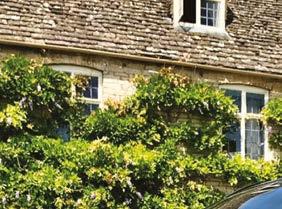
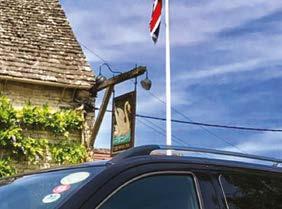







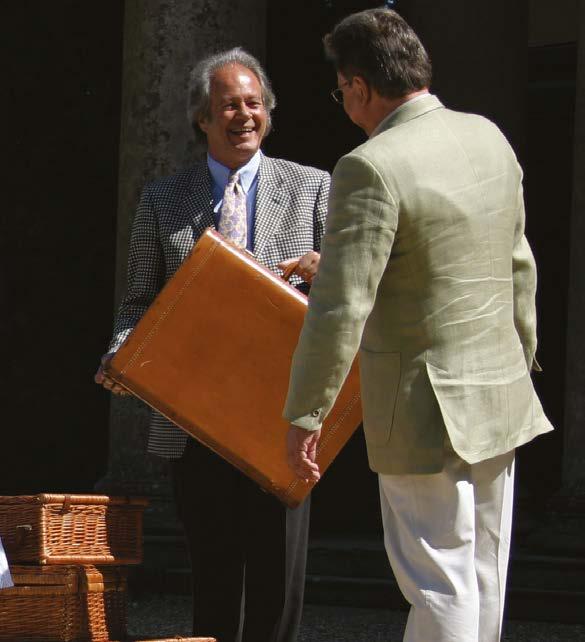
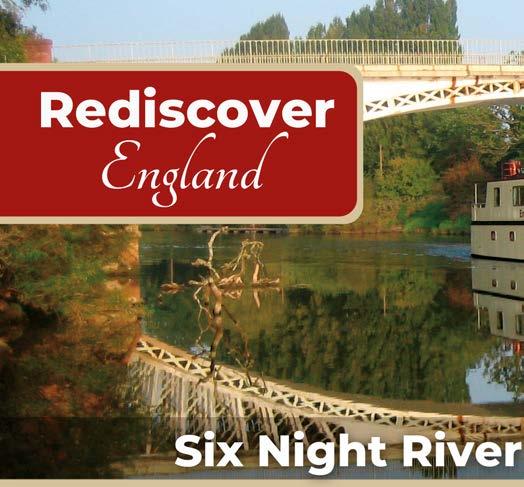




www.britain-magazine.com74 BRITAIN One Day & Multi-Day Tailor Made Private Tours for the Discerning www.bhctours.co.uk | info@bhctours.co.uk | +44 (0)1303 258193
SALISBURY
WORDS DAVID ADAMS
MostEnglish cathedral cities are much older than the cathedrals themselves, with histories reaching back into the Roman era or earlier. Salisbury is the exception that proves the rule: a medieval ‘new town’ laid out on a grid of streets alongside the cathedral in the 13th century.
But one of the best views of city and cathedral is from the ramparts of Old Sarum, on a hillside not quite two miles to the north. Once an Iron Age hillfort, it was later the site of a medieval castle and the original cathedral, until the 13th century, when Bishop Richard Poore led the clergy down into the valley to build the present cathedral. This windy hilltop, now home only to some picturesque ruins, is where the centre of this cathedral city really ought to be.
Old Sarum was abandoned for several reasons, including a lack of space, the difficulty of obtaining fresh water and a dispute with the garrison of the castle. According to legend, the location of the new cathedral was determined by the fall of an arrow fired from Old
Sarum, although it would have been difficult to fire an arrow two miles, even with the north wind blowing a gale. The subsequent course of events led to the creation of one of the most magnificent sights in the British Isles: the dizzying spire of Salisbury Cathedral. Built in 1320, 404 feet high, it is the largest spire in Britain and taller than any other spire built before 1400 that is still standing anywhere. Drive or walk over the hills that surround Salisbury and it is this majestic stone structure that you see before anything else.
But there is much more to Salisbury than its cathedral. At the heart of the city, the market square has been the city’s focal point since a market was first held here in 1227 and the streets around it are full of good places to eat, drink and shop.
There are as many historical buildings and sights as you’d expect to find in a cathedral city, including the gates through the remaining stretches of the old city wall into the Cathedral Close; while in the historic Close itself, you’ll find an array of architectural styles ranging from the 13th to the 20th centuries.

Home to the tallest cathedral spire in Britain and the world’s best-preserved Magna Carta, Salisbury is a historic treasure trove
According to legend, the location of the new cathedral was determined by the fall of an arrow fired from the hilltop of Old Sarum
BRITAIN 75www.britain-magazine.com city guide ILLUSTRATION: © LIZ KAY
1SALISBURY CATHEDRAL
The Cathedral has Britain’s tallest spire, largest cloisters and the world’s oldest clock. Join one of the Tower Tours for the chance to sample the best views available of the city centre as you look out over the green lawns of the Cathedral Close, fringed by many of the city’s most beautiful buildings, the medieval streets and market square to the north and the water meadows to the west.
www.salisburycathedral.org.uk
2CHAPTER HOUSE
One of the four original copies of Magna Carta, dating back to 1215, is housed in the cathedral’s beautiful 14th-century Chapter House. Look out too for the detailed stone frieze depicting scenes from Genesis and Exodus, including Noah’s Ark and the Tower of Babel.


www.salisburycathedral.org.uk
ARUNDELLS
Arundells, a gorgeous 18th-century house in the Close, was the home of former Prime Minister Sir Edward Heath until his death in 2005. Built on the site of a medieval canonry, the house is still filled with Sir Edward’s belongings. Two acres of beautifully kept gardens slope away gently behind the house, down to the river. arundells.org
MOMPESSON HOUSE
On Chorister Green, a picturesque rectangle of lawn in a corner of the Cathedral Close, Mompesson House is an elegant 18th-century affair, now furnished in the style of Queen Anne’s reign (1702-14). You might recognize it as one of the locations used in the film Sense and Sensibility. Don’t miss


76 BRITAIN www.britain-magazine.com
3 4
the little tea room in the garden, where you can sip tea in the sunshine beside the lawn, like a lady or gentleman of leisure of the 18th century.
www.nationaltrust.org.uk
ST THOMAS’S CHURCH
This church was built to serve the spiritual needs of the people who built the cathedral, and it’s still thriving. Marvel at the vast 15th-century Doom Painting, thought to be the largest in England. Painted in 1475, it shows Christ at the Day of Judgement, casting sinners into Hell and sending the righteous to Heaven. It was whitewashed over during the Reformation and only rediscovered by chance in the 19th century.

www.stthomassalisbury.co.uk
SALISBURY MUSEUM


In the Cathedral Close, this museum is a good place to find out more about the Neolithic heritage of this part of Wiltshire: Salisbury lies within one of the richest areas of prehistoric human sites anywhere in the country. The wide-ranging collections range from archaeology to fine art and fashion. A prize exhibit is the Amesbury Archer, whose grave contained the richest array of items ever found from this period. salisburymuseum.org.uk
TOWN PATH
The scenic Town Path runs beside streams across the water meadows between Salisbury and the neighbouring suburb of Harnham. It offers the best views of the cathedral from the valley floor; it was from a spot near the path at the Salisbury end that John Constable painted one of his most celebrated works, Salisbury Cathedral From The Meadows, in 1831.
www.salisburywatermeadows. org.uk

The Cathedral has Britain’ s tallest spire, largest cloisters and the world ’ s oldest clock
BRITAIN 77www.britain-magazine.com
5 6 7
city guide PHOTOS: © TONY WATSON/ANGELA HAMPTON PICTURE LIBRARY/TREVOR WARR/ALAMY/JAKE EASTHAM/NATIONAL TRUST IMAGES/NADIA MACKENZIE/BERTL123/ASH MILLS
STONEHENGE
Salisbury makes an excellent base for visiting the mystical stone circle of Stonehenge. No matter how many times you have seen pictures of it, nothing compares to getting up close to this awe-inspiring ancient monument, thought to date back 4,500 years.

www.english-heritage.org.uk
WILTON HOUSE
The little town of Wilton, just a few miles west of Salisbury, is dominated by this magnificent stately home, seat of the Earl of Pembroke, where you can admire some of the finest 17th-century Palladian exteriors and interiors in England.

www.wiltonhouse.co.uk
OLD SARUM

There is not much left of the Iron Age fortification of Old Sarum, beyond the crumbling flint of the old castle walls, the deep ditches outside the ramparts and the outline of the old cathedral, picked out in stone on the ground. But it’s an evocative place, and the views back over pretty Salisbury are spectacular.
www.english-heritage.org.uk
THE PLANNER
GETTING THERE
South Western Railway trains run from London Waterloo to Salisbury (1hr 30min).
www.thetrainline.com
WHERE TO STAY
Stay in the Pembroke Arms, a former coaching inn in the market town of Wilton. Convenient for Salisbury and Stonehenge, it has pretty rooms filled with antiques and plenty of old-fashioned charm. It serves excellent food too. www.pembrokearms.co.uk
WHERE TO EAT AND DRINK
For afternoon tea with a view of the famous spire, head for the Bell Tower Tea Rooms overlooking the cathedral's north lawn, which serves up excellent cream teas and afternoon teas. The Cathedral's Refectory Restaurant also boasts views of the spire, thanks to its glasss roof. For lunch or dinner try Allium, an intimate, family-run restaurant overlooking the bustling market square. A short but tempting menu might include the likes of roast guinea fowl with sweet and sour
aubergine and apricot chutney, or chalk stream trout with roast cauliflower, caviar sauce, gooseberry and chervil. Salisbury has many historic pubs; try the wood-beamed Haunch of Venison, whose history dates back 700 years and which is said to be haunted.
www.salisburycathedral.org.uk; alliumsalisbury.restaurant; haunchpub.co.uk
i FURTHER INFORMATION www.visitwiltshire.co.uk
78 BRITAIN www.britain-magazine.com city guide
8 9 10
PHOTOS: © ENGLISH HERITAGE TRUST/ENGLISH HERITAGE PHOTO LIBRARY/SIMON UPTON





















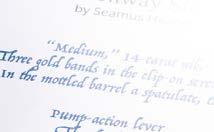




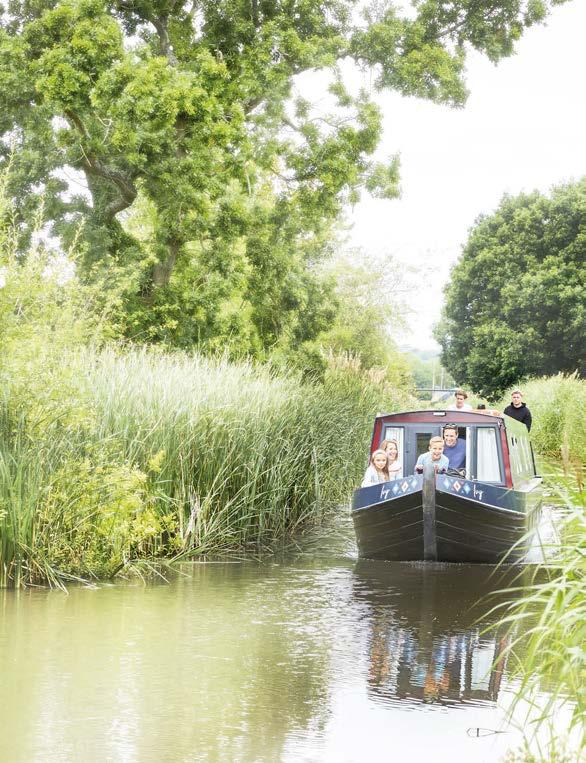







www.britain-magazine.com BRITAIN 79 the cartographic arts stunning vintage style maps for your home or workplace Cotswolds, Wiltshire Gloucestershire & The Peak District plus many more. Print only or framed On paper or canvas Amazing detail Incredible design Up-to-date cartograph y www.thecartographicarts.com - +44(0)1453 768 598 - thecartographicarts@gmail.com NW WS The Cartographic Arts NNW WNW WSW WSS www.kendallcars.com Head office: 34 Aldershot Road,Guildford GU2 8AF Branches in: Ash, Camberley, Canterbury, Chertsey, Guildford, Leatherhead, New Malden, Raynes Park, Wandsworth, Wimbledon, Woking. • Cars • Mercedes • BMW Mini 5dr & Convertible • Hybrids • Multiseaters • 9 seater auto & manual Family run self-drive hire business since 1969 T: +44 800 770007 • E: info@kendallcars.com Choose your size or style of vehicle to rent and either collect direct from any of our 12 sites or, if you are flying into Gatwick or Heathrow –let us meet you at the airport. Self-drive narrowboats with full coaching provided, from a choice of 9 stunning locations in England, Scotland and Wales. Book now for 2023. NARROWBOAT HOLIDAYS inGreatBritain Find out more about their wide range of boats and locations on (0044) 1527 575115 holiday@black-prince.com | black-prince.com





80 BRITAIN www.britain-magazine.com interview PHOTOS: © LITTLE SIXPENCE PHOTOGRAPHY/2021 CHARLOTTE GRAHAM
A day with...
CHARLOTTE LLOYD WEBBER
The Director of the team putting together this year’s Christmas display at Castle Howard in Yorkshire tells us how the magic is created
BRITAIN: Tell us about this year’s Christmas theme at Castle Howard.
CLW: This year’s theme is Into the Woods: A Fairy Tale Christmas. We’re exploring some of the best-loved fairy tales and creating our own narrative where different characters, such as Snow White, Red Riding Hood, Hansel and Gretel, Jack, and Rapunzel come together in a magical adventure through the dazzling festive splendour of Castle Howard, culminating in the story of Cinderella, which unfolds down the majestic Long Galley with video projection and bespoke soundscape that can be heard throughout the house…
B: Where do your ideas come from?
CLW: The beginning is always the immediate environment where the event will take place. We always try to complement, enhance and find synchronicity with the spaces so it feels that the designs truly belong there rather than being super-imposed.
B: What does a typical workday look like for you?
CLW: During an installation period time is very tight and runs like a military operation. We start as early as 7am with a team debrief of the previous day’s activities and then often work 12-14 hours straight through and on occasion through the night, if required!
B: How long does it take to set up an event?
CLW: We build throughout the year and then it takes around three weeks to fully install and then layer lighting, sound and projection. As we approach the final install it is my responsibility to constantly move between all the departments to make sure everything is being executed properly and on time and to come up with last minute fixes when the unanticipated happens!
B: What is your favourite part of the day?
CLW: I love popping in to see how different pieces are evolving – and, more often than not, I’m delighted and amazed!
B: What do you find most rewarding?
CLW: The moment in the design process where we fully realise how the narrative will unfold. And the sheer range of extraordinary and talented people I get to work with. I also always look forward to the expression on our clients’ and then the visitors’ faces when they finally see the finished piece.
B: What challenges do you face day to day?
CLW: Containing the vision within the budget! Stately home events are often essential in raising desperately needed restoration funds so these remarkable places can be shared with the community and beyond for many generations to come, but this means being extremely resourceful from an event point of view. The other is sustainability in terms of the impact of the event, and finding ways to reduce waste, re-use and recycle.
B: What has been your proudest moment in the job?
CLW: Winning the UK Heritage Award for Best Event for Castle Howard’s The Twelve Days of Christmas was wonderful in that it recognized the huge collective effort of everyone involved across the Castle Howard estate. That, and having the opportunity to share the process of building and installing Narnia last year with millions of people who would otherwise never get to see it via the Channel 4 documentary… The crew are back this year filming Into the Woods: A Fairy Tale Christmas
B: How does it feel to see your hard work on display?
CLW: The first time I walk through the completed Castle Howard installation always takes my breath away. Not only is it a huge privilege to work in such a remarkable environment, but the sheer collective endeavour to bring it to fruition and create an experiential journey for many thousands of people across all ages and walks of life really is an honour like no other I know!
Into The Woods: A Fairytale Christmas is at Castle Howard from 12 November until 2 January. www.castlehoward.co.uk

BRITAIN 81www.britain-magazine.com interview
THE GREAT BRITISH QUIZ
Do you know your British landmarks? Put your knowledge of the country’s most famous features – natural and man-made – to the test
Which world-famous London landmark, recently restored, can be heard from every corner of Westminster?
In which London park can Speaker’s Corner be found?
a) Regents Park
b) St James’s Park
c) Hyde Park
In which northern English city is the cathedral known as the Minster?
Which ancient wall (above) marks its 1900th anniversary this year?

Which Scottish castle was built on an ancient volcano?
Which UNESCO World Heritage Site in Wiltshire is one of the world’s most famous Neolithic sites, dating back to 3100 BC?
In which English city can the university library above be found?
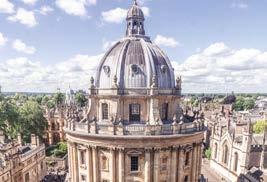
Which vast stately home in Oxfordshire was the birthplace of Winston Churchill?
a) Chartwell
b) Stowe
c) Blenheim Palace
Which famous monument to a naval hero towers over Trafalgar Square in London?
According to legend, this World Heritage Site in Northern Ireland (above) was built by a giant named Finn McCool.
Which 700-year-old ceremony takes place in the Tower of London every night at 9.30pm?
a) The Ceremony of the Ravens
b) The Ceremony of the Keys
c) The Procession of Beefeaters
Name the above landmark in Cornwall, which is accessible via a causeway at low tide.

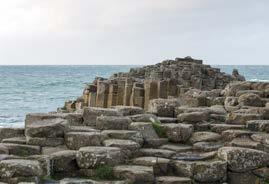
Unscramble NEAR FAR CON to find a famous Welsh castle (above).

The Jacobite train, made famous in the Harry Potter films, crosses which viaduct?
a) Glenfinnan
b) Glencoe
c) Glenross
Which freshwater lake, 37km southwest of Inverness in Scotland, is best known for a mythical creature?

last word www.britain-magazine.com82 BRITAIN
ANSWERS1Hadrian’sWall2EdinburghCastle3Stonehenge4Giant’sCauseway5b)TheCeremonyoftheKeys6BigBen7Oxford8c)BlenheimPalace9Nelson’sColumn 10StMichael’sMount11c)HydePark12York13Caernarfon14a)Glenfinnan15LochNess PHOTOS: © ENGLISH HERITAGE TRUST/STEVEN BARBER/NATIONAL TRUST IMAGES/ANNAPURNA MELLOR/VISITBRITAIN/SOPHIE NADEAU/ CROWN COPYRIGHT (2018) CADW/VISITSCOTLAND/KENNY LAM
The Treasure Houses of England are a collection of the most magnificent palaces, houses and castles, each with its own unique charm, stunning architecture and beautiful gardens. Most are still homes to the great families who have owned them for generations and together, the houses display some of the most important art collections in the world, showcasing exquisite examples of fine furniture, porcelain, china and portraiture. On this captivating tour, we explore nine of these impressive places, alongside other historic gems, giving us a fascinating insight into life in England over the centuries.
Staying in high quality characterful hotels, our expertly curated Albion tours take in historic houses, castles and gardens all with unique characteristics and fascinating stories. Attend immersive talks from expert guest speakers, experience exclusive guided tours and indulge in flavorful lunches and dinners all in the company of your caring tour director and like-minded traveling companions. Our exclusive range of tours listed alongside offers a diverse balance of itineraries with flexibility for room upgrades and extra nights. Simply call Ivan, our dedicated Albion reservation consultant, who can personally advise you.
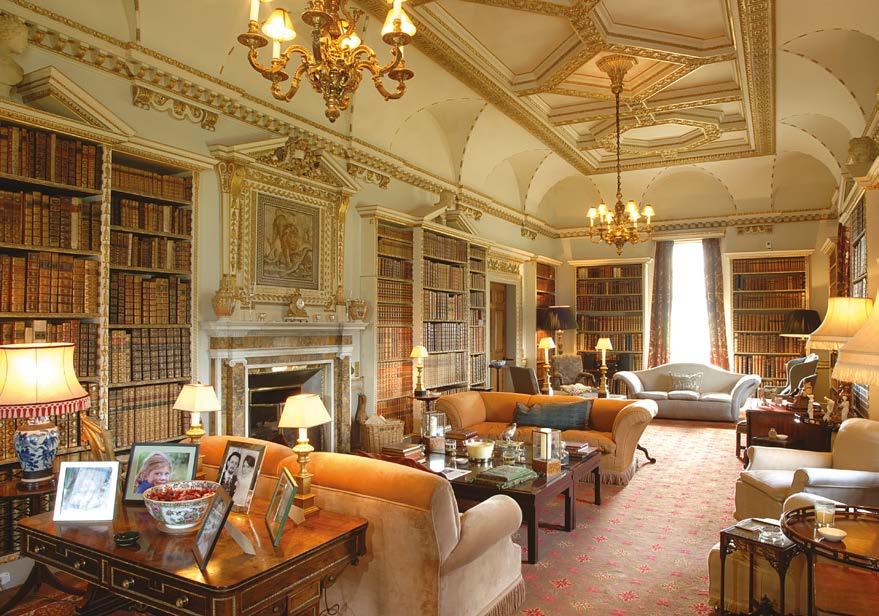
toll free)

Other Albion Journeys available throughout 2023
May South of England Stately Homes & the Isle of Wight (10 days)
June Queens of the Castle – The Roses & Thorns of the Tudors (10 days)
June Pilgrims, Founding Fathers & Hero GIs on the 4th July (10 days)
July Historic Kent Castles, Gardens & Coastline (9 days)
July Edinburgh, Highlands & Breathtaking North Coast 500 (11 days)
July Aristocrats, Manor Houses & a Grand Tour to the North (10 days)
July A Journey Through the Wonderful Heritage of Wales (12 days)
August An Exclusive Tour of Royal Palaces & Regal Places (9 days)
September The Regal Estates & Jacobean Manors of Norfolk & Suffolk (8 days)

December Step Back in Time – Traditional Country House Christmas (6 days)
Discover Albion’s range of fully escorted tours exploring the culture and heritage of Britain

Call to request your FREE brochure today or visit Albionjourneys.com
Call toll free: 1-866-834-8358 and quote: ‘Britain’ for discount
Holkham Hall Leeds Castle
1-866-834-8358 (US toll free) 1-866-834-8358 (US
albionjourneys.cominfo@albionjourneys.com ? Save $150pp quote BRITAIN
What’s included ◆ Return airport transfers from London Heathrow* ◆ 11 nights accommodation ◆ Welcome drink and canapés ◆ Full English/Continental breakfast each day ◆ 3-course table d’hôte dinner on 10 nights at the hotels (with after-dinner tea and coffee) ◆ 1 dinner at a local pub ◆ Services of a tour director throughout your stay ◆ Travel to and from all excursions *supplement applies for transfers from all other airports and all other locations, including central London. Special extras included in your itinerary ◆ Guided Palace House tour at Beaulieu ◆ Audio-guided tour at Leeds Castle ◆ Exclusive out-of-hours Champagne guided tour of Hatfield House ◆ Private guided tour of Holkham Hall led by Hall Steward with refreshments ◆ Guided tours of Doddington Hall and Gardens, Chatsworth House and Burghley house ◆ Private guided tour of Castle Howard, with refreshments and guidebook ◆ Guided tour and lunch at Harewood House ◆ Audio-guided tour and afternoon tea at Blenheim Palace ◆ Themed evening talk by a guest speaker
T&Cs. For the latest applicable terms and conditions, please refer to our website: www.albionjourneys.com/terms-and-conditions. Just Go Holidays Ltd trading as Albion Journeys. USA address: 27 North Chestnut Street, New Paltz, NY 12561, USA. UK registered address: 1st Floor, 111 High Street, Cheltenham GL50 1DW, United Kingdom. DISCOVER BRITAIN’S UNIQUE HERITAGE A Tour Around the Treasure Houses of England 12 days from $6640pp | June 4 & September 10, 2023
Book at: castlehoward.co.uk
Off Peak tickets from just £20 per person!
20 min drive from the centre of York. Accessible via public transport with Castleline bus stopping a short distance from York station Castle Howard, York, YO60 7DA castle_howard castlehoward castlehowardest













